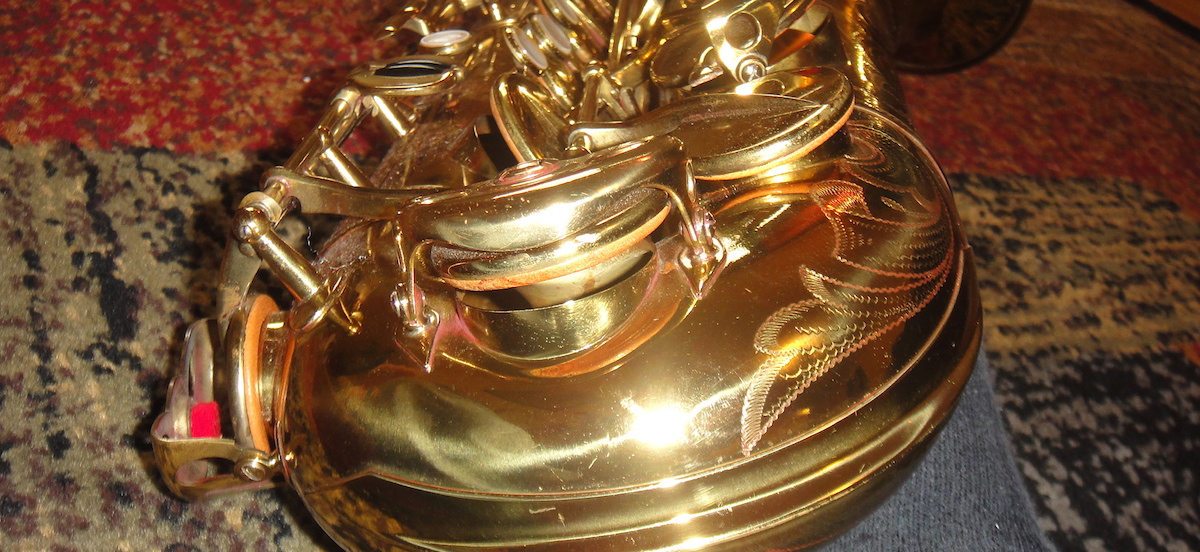
This is part 1. Check out part 2 here.
*Note: The gallery at the very bottom of this post is a slide show with subtitles, so click it to watch it (read captions) and get most of the information from this post! You only get the subtitles on desktop format or on a tablet, in landscape orientation to see the text. On mobile, you see only images, no text.
I very often get asked whether someone’s vintage Selmer Mark VI, Balanced Action, Super Balanced Action or other Selmer saxophone has its original lacquer, or is relacquered. There is no existing guide on the internet that I have yet seen that does a good job of answering this question for people. So that’s what this is.
In this guide, I’ll show you what original Selmer lacquer looks like, and I will show you examples of relacquered Selmers. This is important, since the originality of the lacquer has a lot to do with the value of a vintage Selmer. This article is Selmer-specific, for a few key reasons.
- Vintage Selmer lacquer looks quite different depending on WHERE the saxophone assembled and finished.
- Selmer lacquer looks quite different depending upon WHEN the saxophone was made.
- Many relacquered Selmer saxophones were refinished at the factory, and they were done so well that it is hard for the non-specialist to tell if they are original or not. The only specialists I know are either full-time vintage saxophone dealers, and a handful of experienced private collectors. Learning about vintage Selmer lacquer identification is not really part of saxophone repair, so this is not a question that your local repair shop is likely to answer reliably. If you study this guide carefully, you will know enough to identify whether a Selmer is original or relacquered with more certainty than was possible before this guide.
The image above is of a Selmer Balanced Action tenor saxophone from around 1939. The engraving is very sharp and clear, but it is all filled in with a red material. This is red rouge, which is an abrasive polishing compound used to shine up saxophones when they are relacquered. Red rouge is difficult to remove from the grooves in the engraving, as well as from the nooks and crannies of the saxophone. You can look around the feet of posts and key guard legs for it, and in the scroll work along the body and bow seams, and it is often there. An original lacquer vintage Selmer almost never would look like this, with lacquer everywhere, but red in the grooves. It’s good to be able to spot these things if you are buying a vintage Selmer. This guide should help people to buy and sell with more confidence about what your Selmer is. I know every seller wants the horn to be original lacquer, and this wanting is a powerful thing.
Some horns were relacquered without their owners’ knowledge! Some were actually relacquered before being sold the first time! Some were relacquered in their first few years of use. It was common practice back in the day, and it only cost a few bucks!
But repeat after me: “It is what it is. It is what it is. It is what it is!” You have to be ok with the possibility that your vintage Selmer was relacquered. So let’s see what it is. This post helps you narrow down where your horn was made, and when. The next post will help you get a feel for what relacquered Mark VI’s (and other Selmers) look like.
The first question you need to answer is where your Mark VI was assembled, engraved, and lacquered. You can tell this by the engraving pattern.
First question: Is my Selmer American-Assembled or European-Assembled? Here are some photos to help you!
You can tell by the engraving pattern. Here are American Engraving Examples
As you can see, the American-engraving pattern has a few distinctive features. First of all, it has a flower bud on the back of the bell that is the easiest tell-tale identifier. It also has the distinctive sweeping leafy pattern extending around the side of the bell from the Selmer stamp, on both sides of the flower bud.
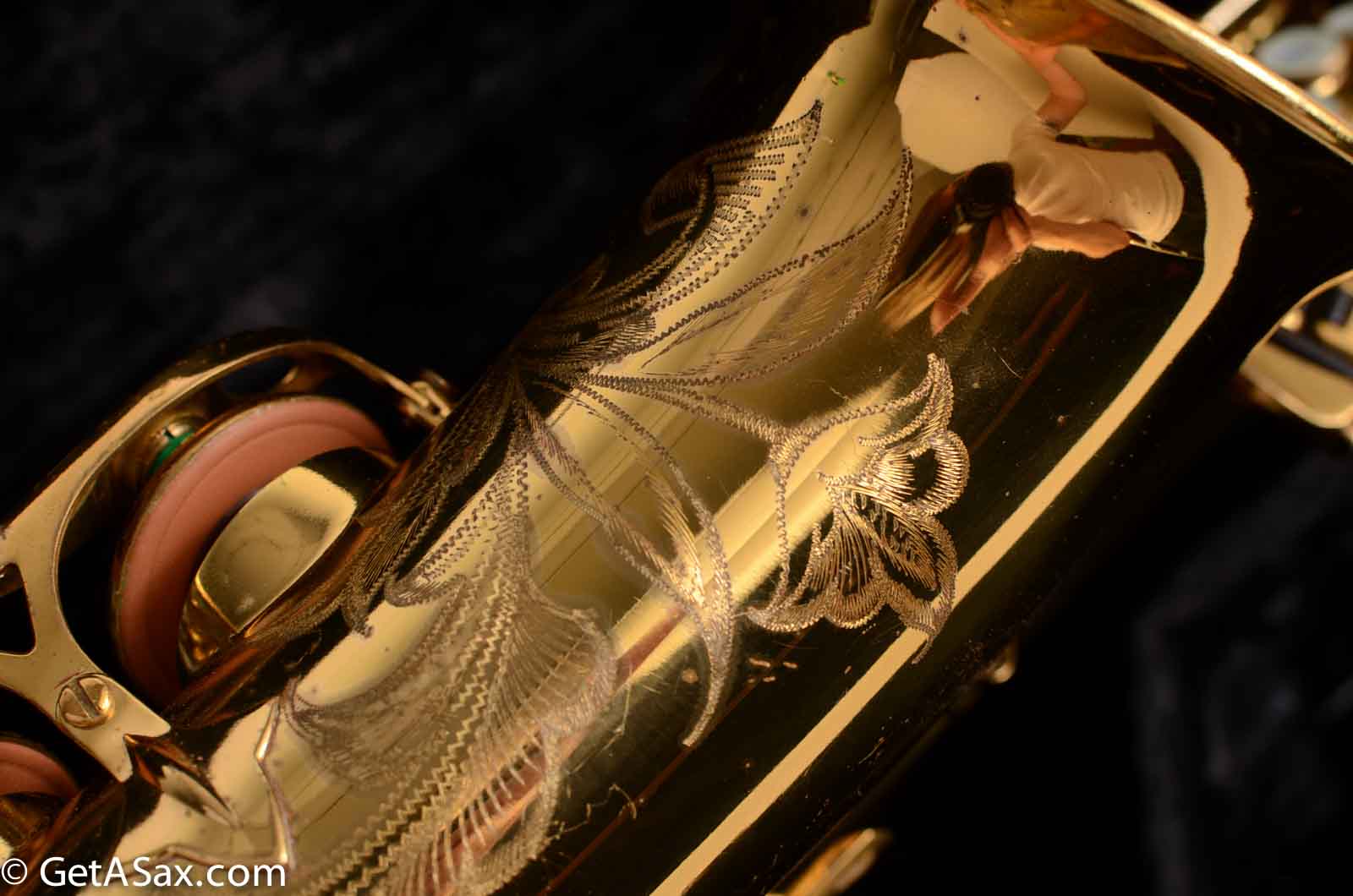
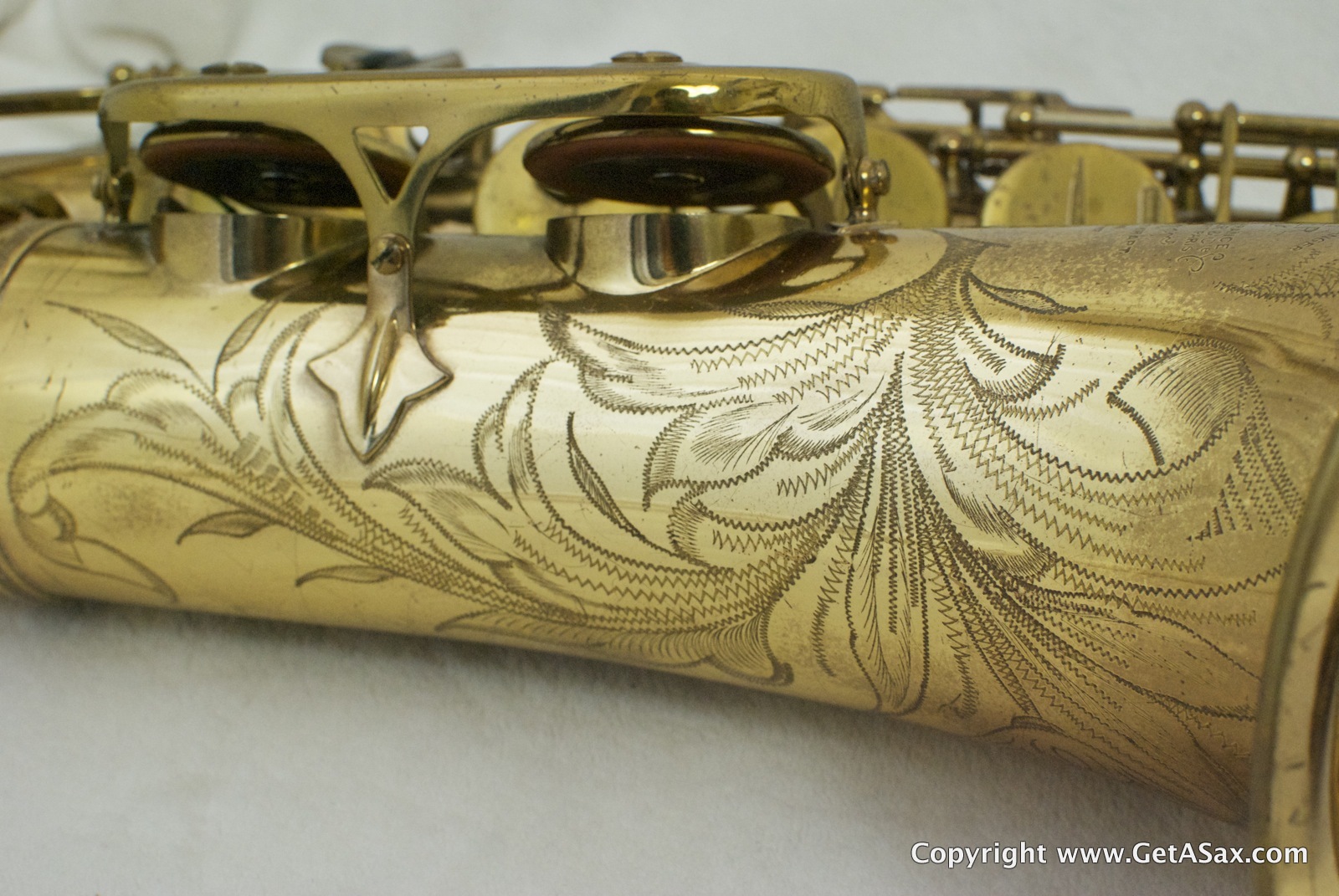
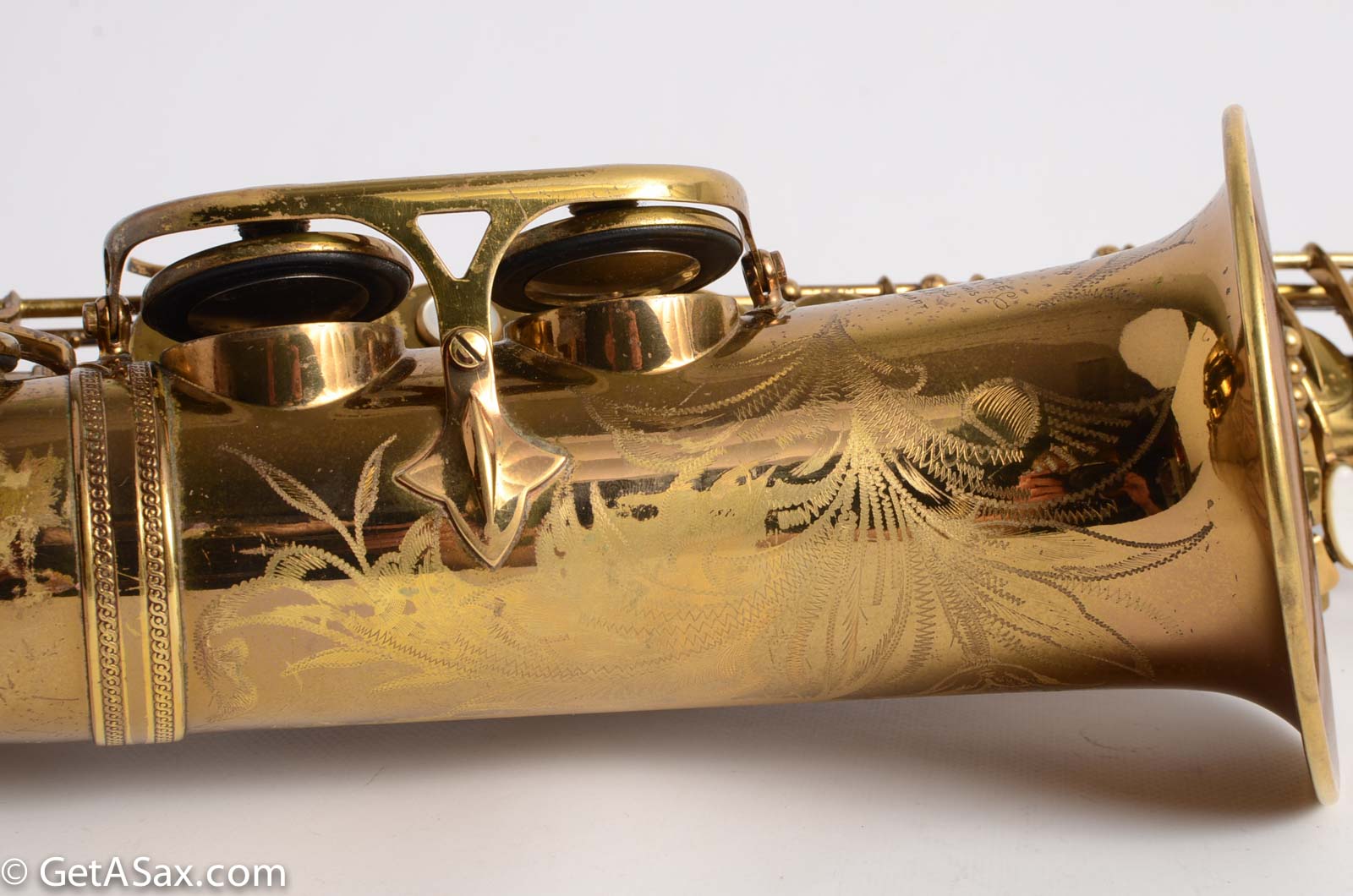
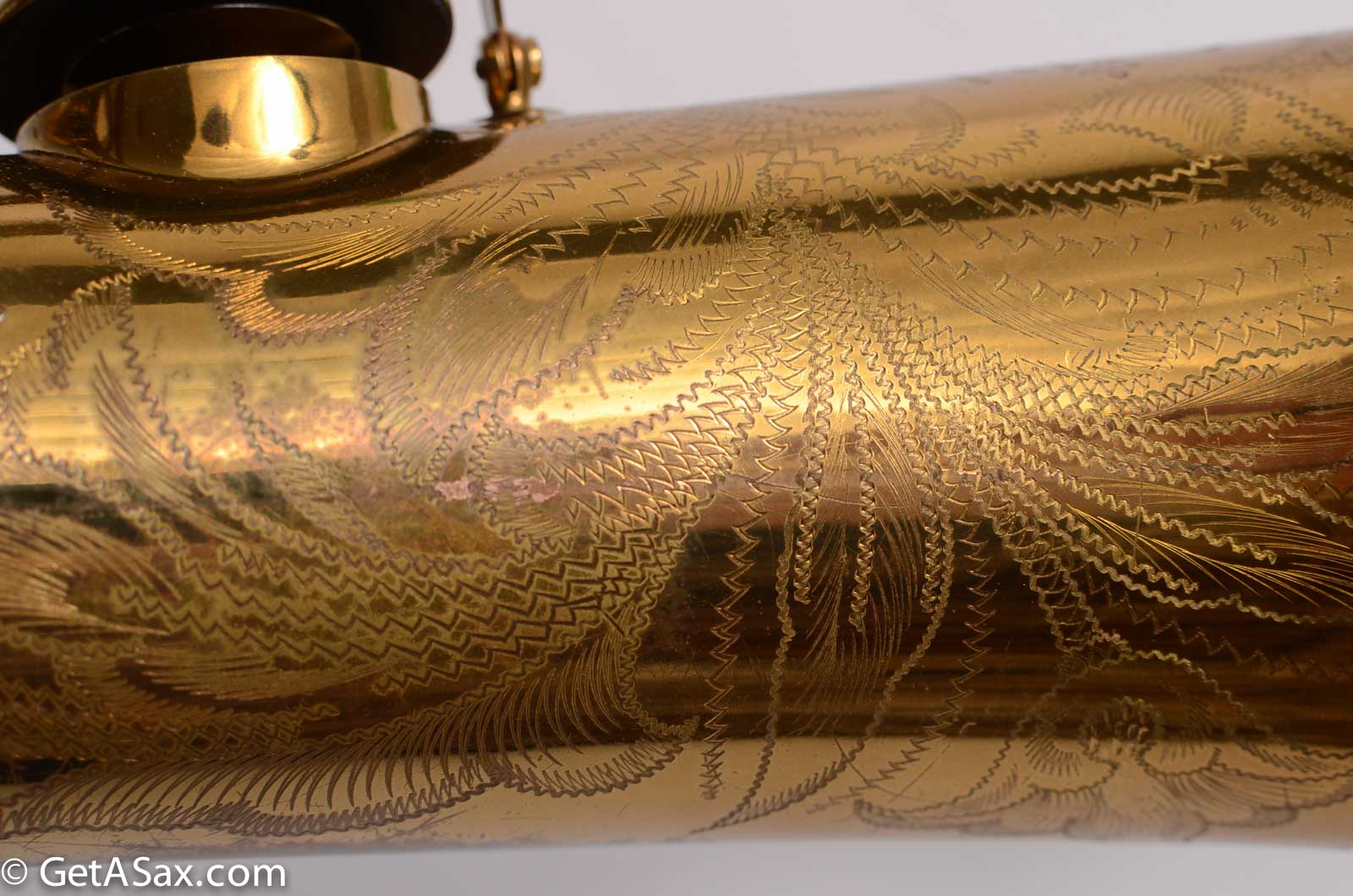
Euro-engraved (French and British Assembled) Selmer Mark VI Original Lacquer
The French and British engraved Selmer Mark VI saxophones NEVER have the distinctive flower bud stretching around the side of the bell. They have more abstract designs on the bell, and they sometimes have a more sparsely engraved flower above the Selmer stamp on the bell. Here are a range of examples covering most of the patterns that you will see. There are also many un-engraved Euro-assembled Mark VI’s, and some (especially French and Swedish-market) Mark VI’s had original silver plated keys and a lacquered body.
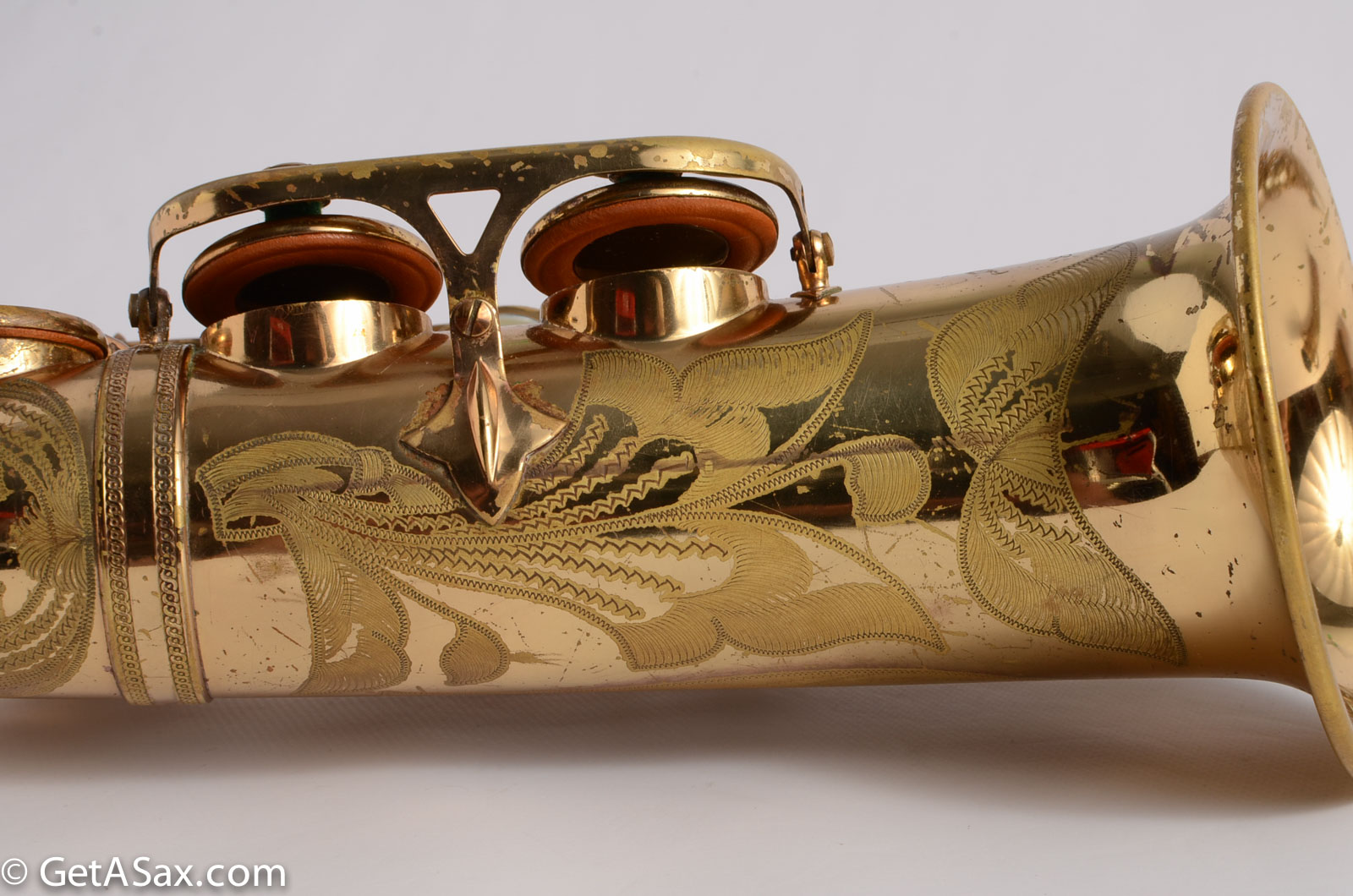
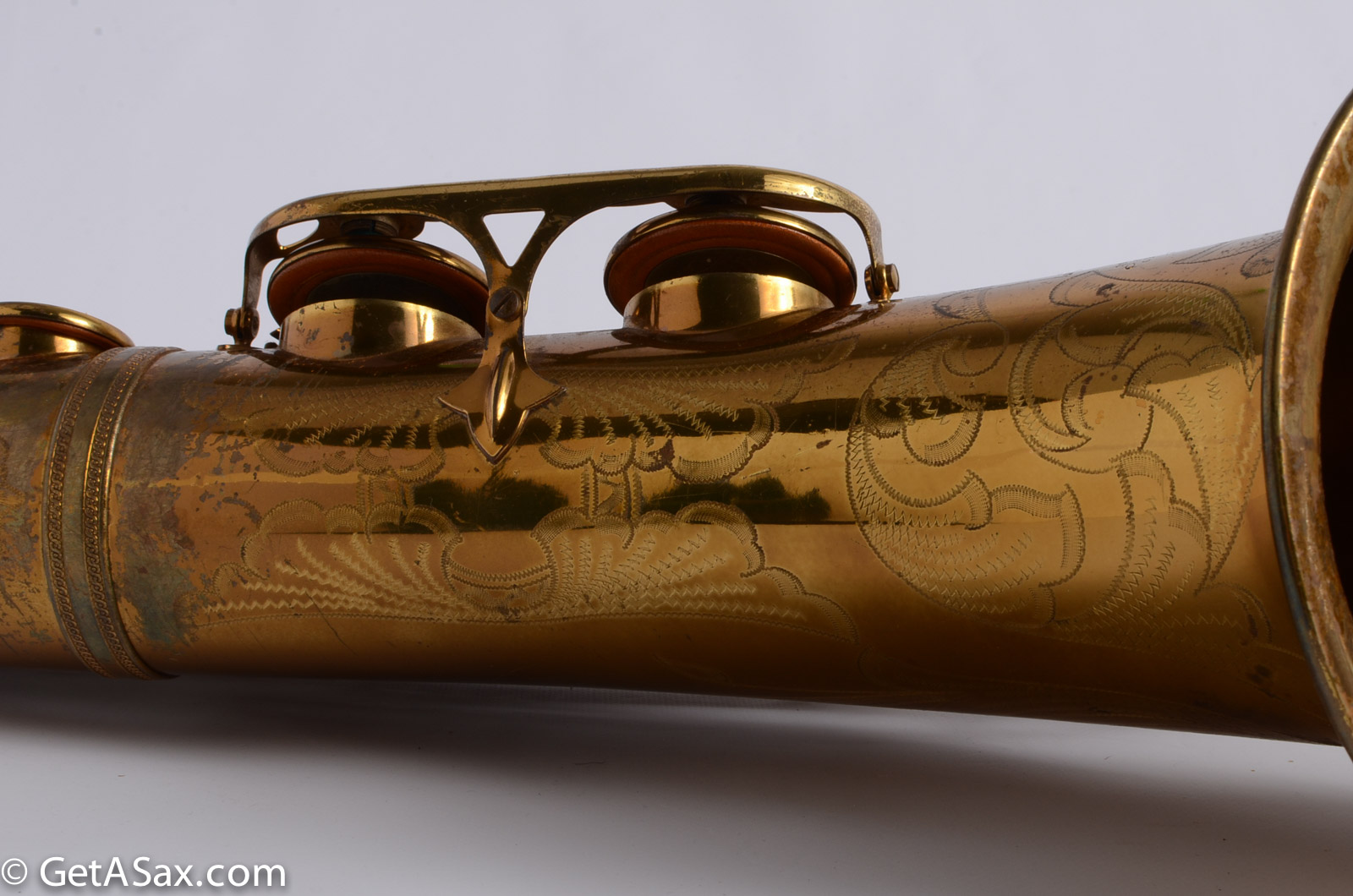
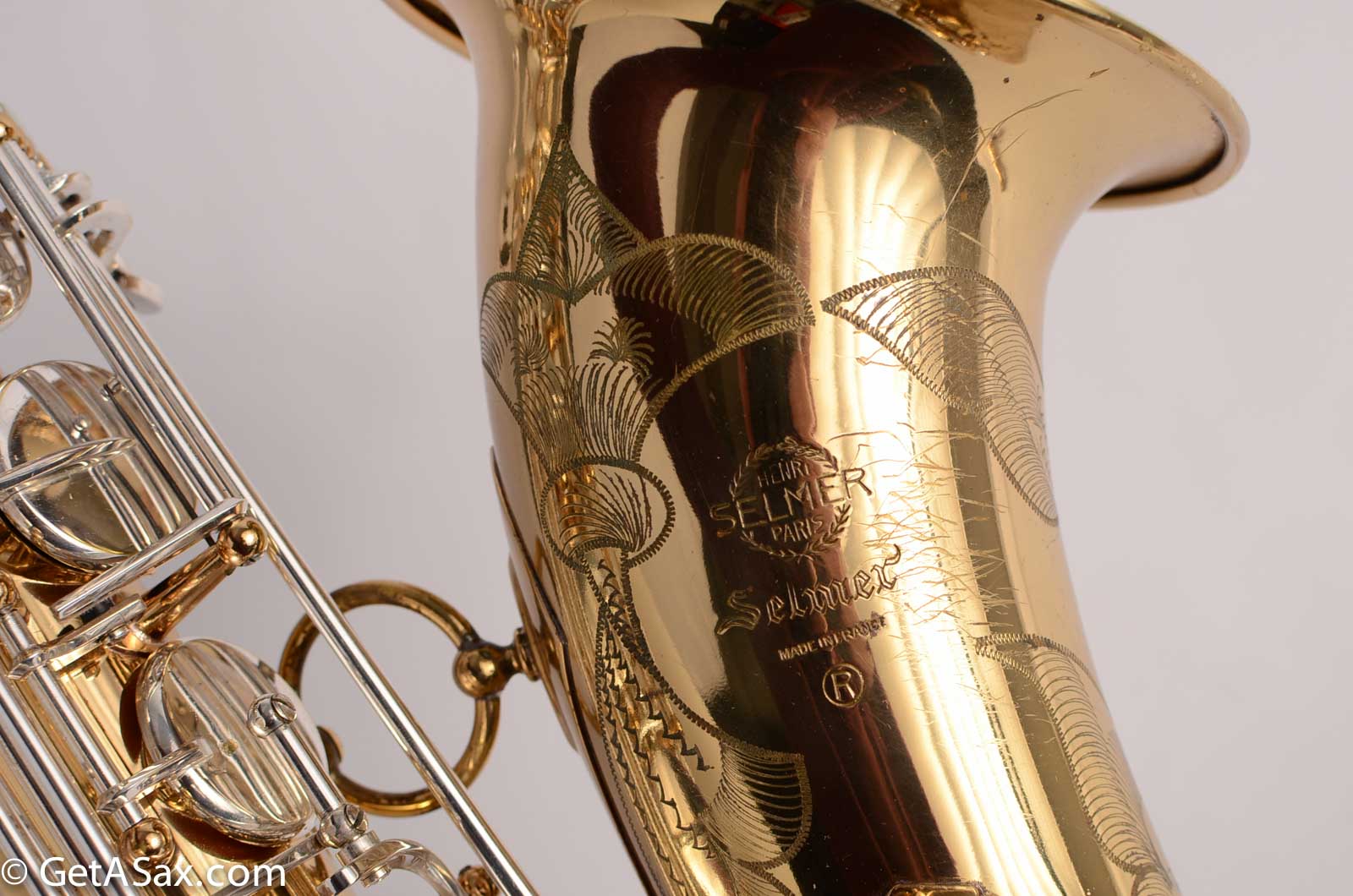

What does American-assembled Selmer Mark VI Original lacquer look like? (Watch the whole slideshow!)
The gallery below is a slide show, so click it to watch it and get most of the information from this post!
If you have a smartphone, the slide text doesn’t appear. If you have a tablet, you have to turn it to landscape orientation to see the text.
The answer depends upon when it was made, and also how it was stored and how much it has been used. Below is an extensive tour through every period of Selmer Mark VI production showing what original lacquer typically looks like at different vintages, going from early to late. Lacquer color changes both from batch to batch within the early Mark VI’s and also generally goes from darker to lighter over time. See the many qualifications in the slide show below. This took forever to make, because i had to go through thousands of possible photos to select very representative ones that help you to learn important things about particular vintages of Mark VI.

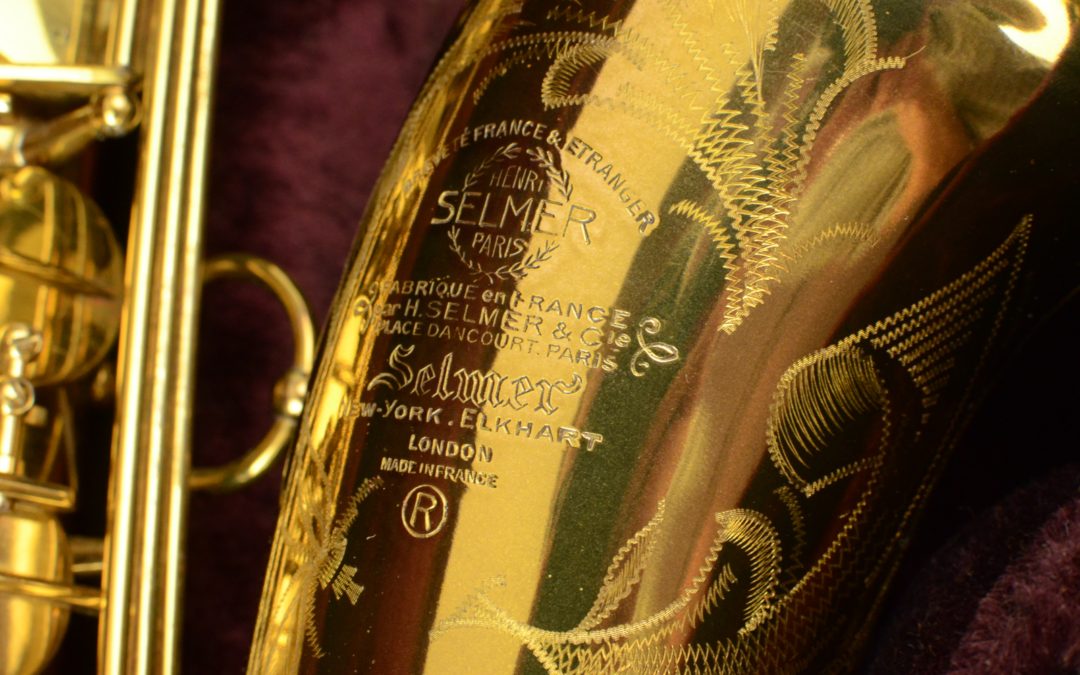
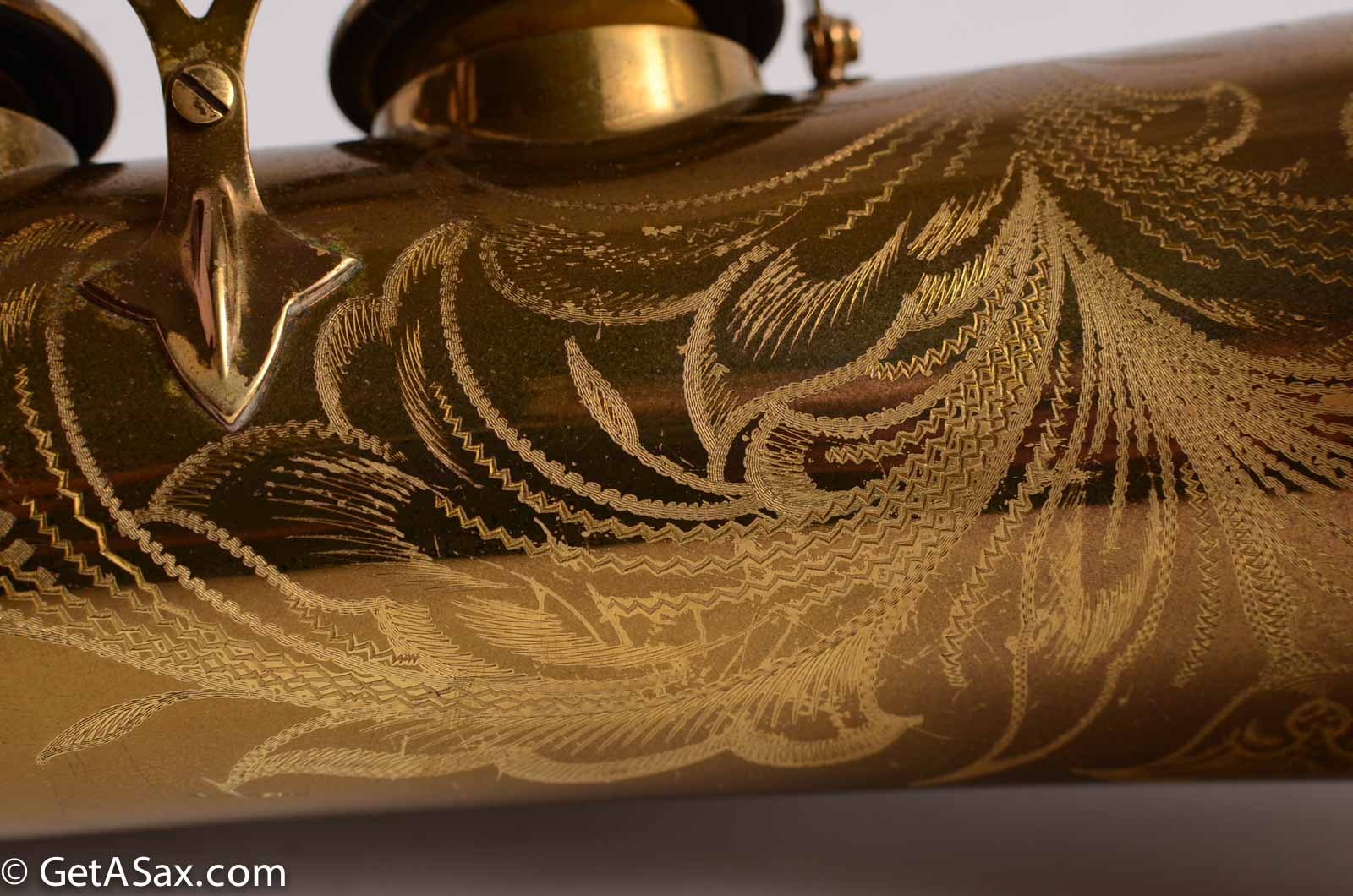
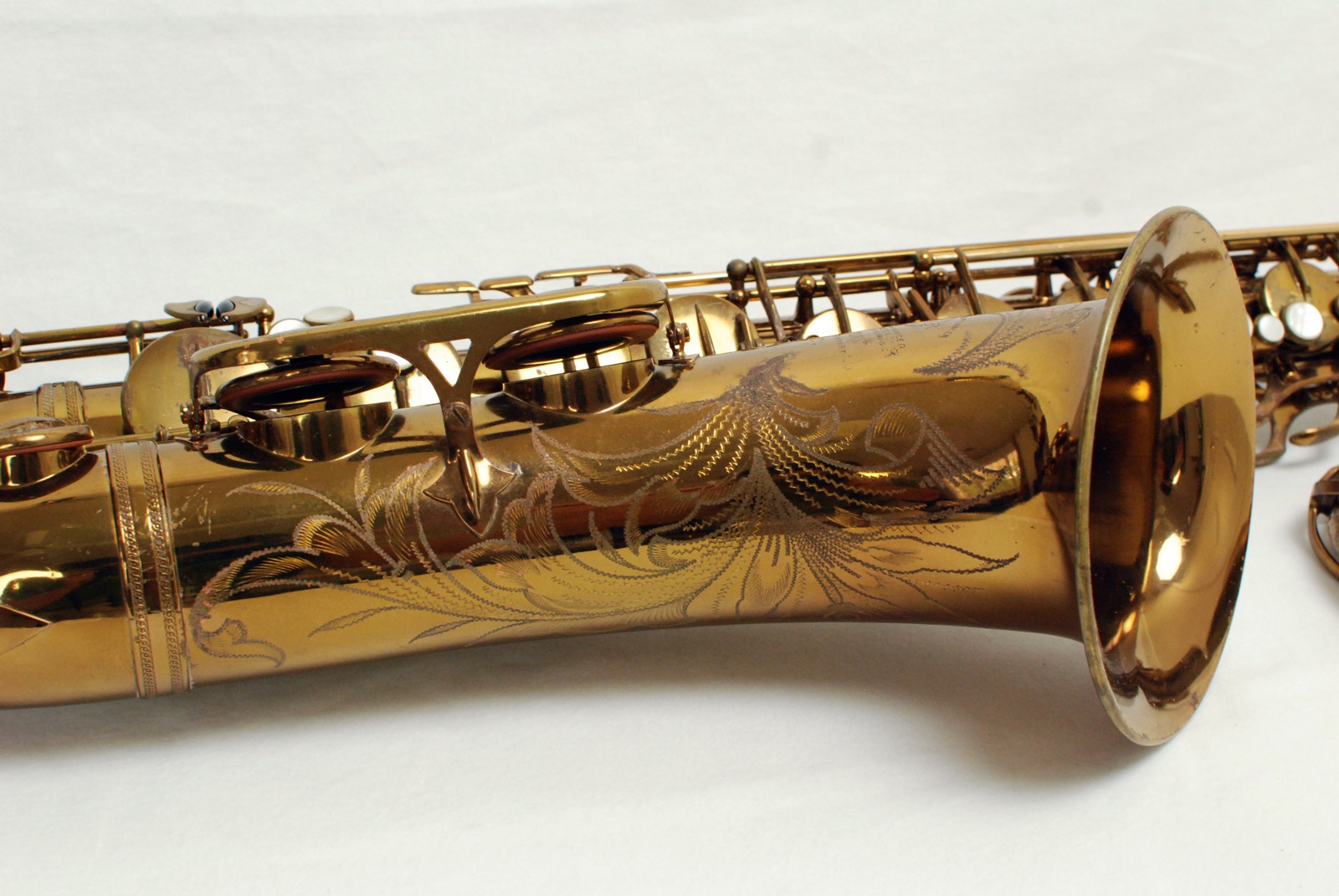
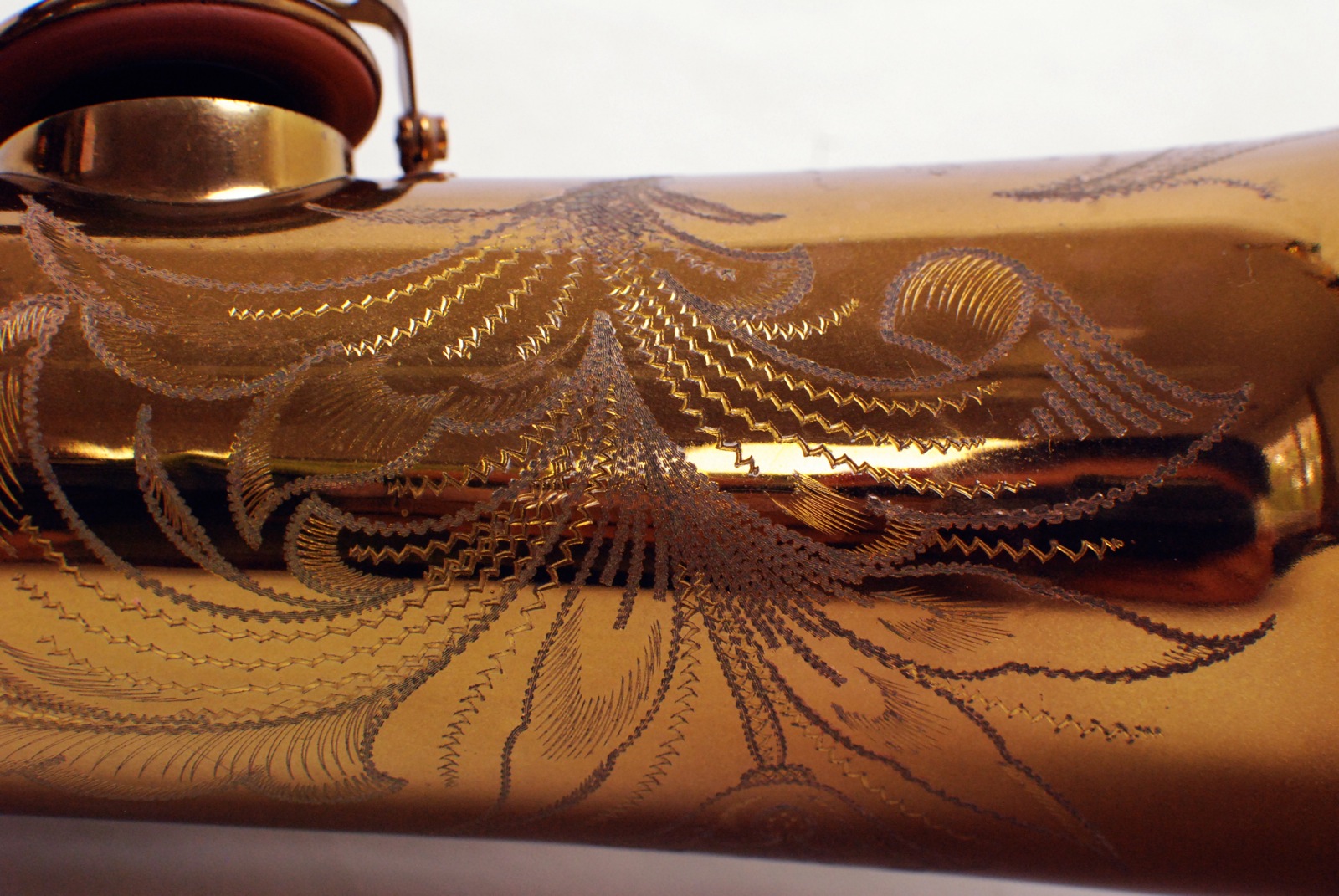
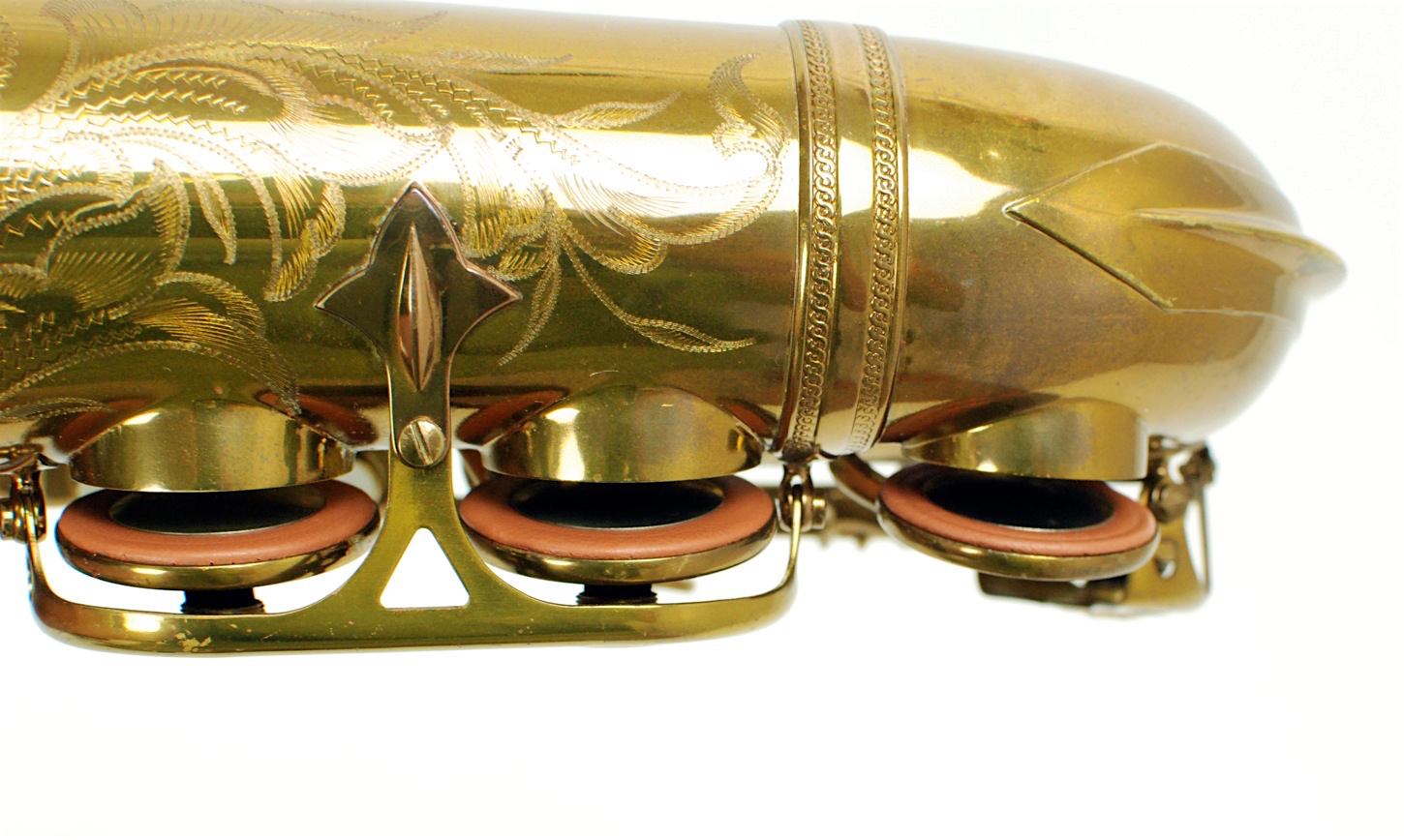
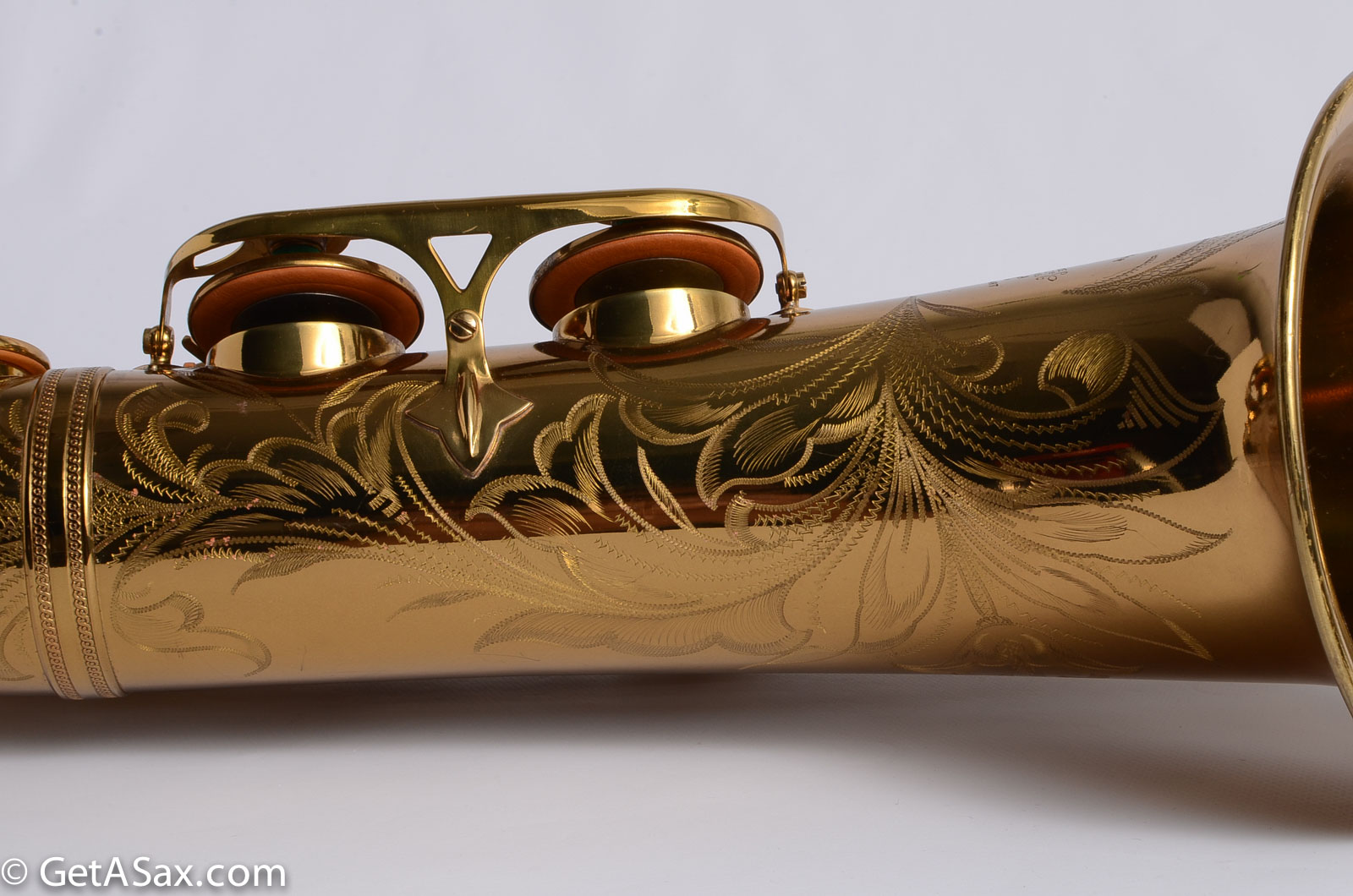
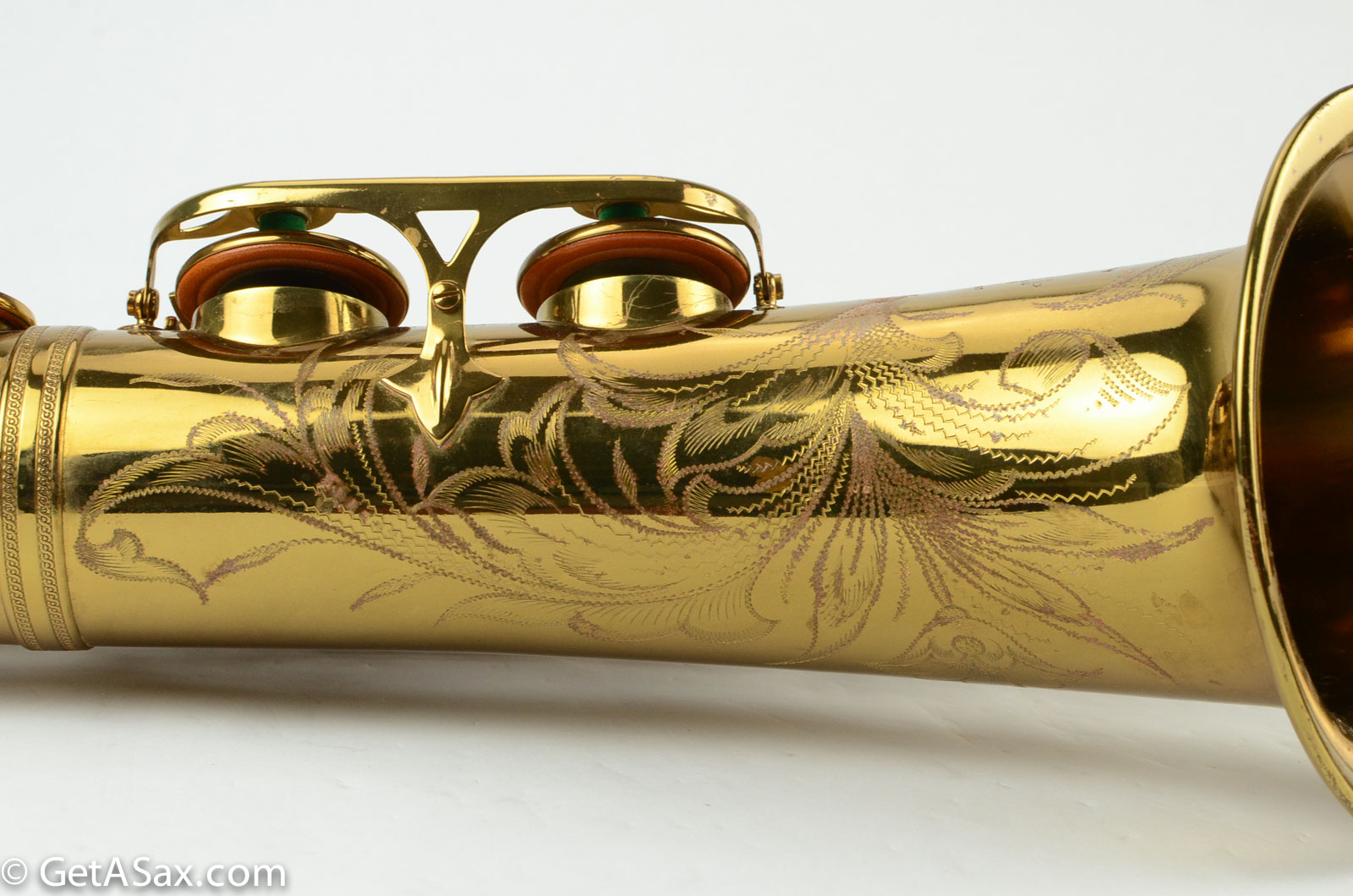
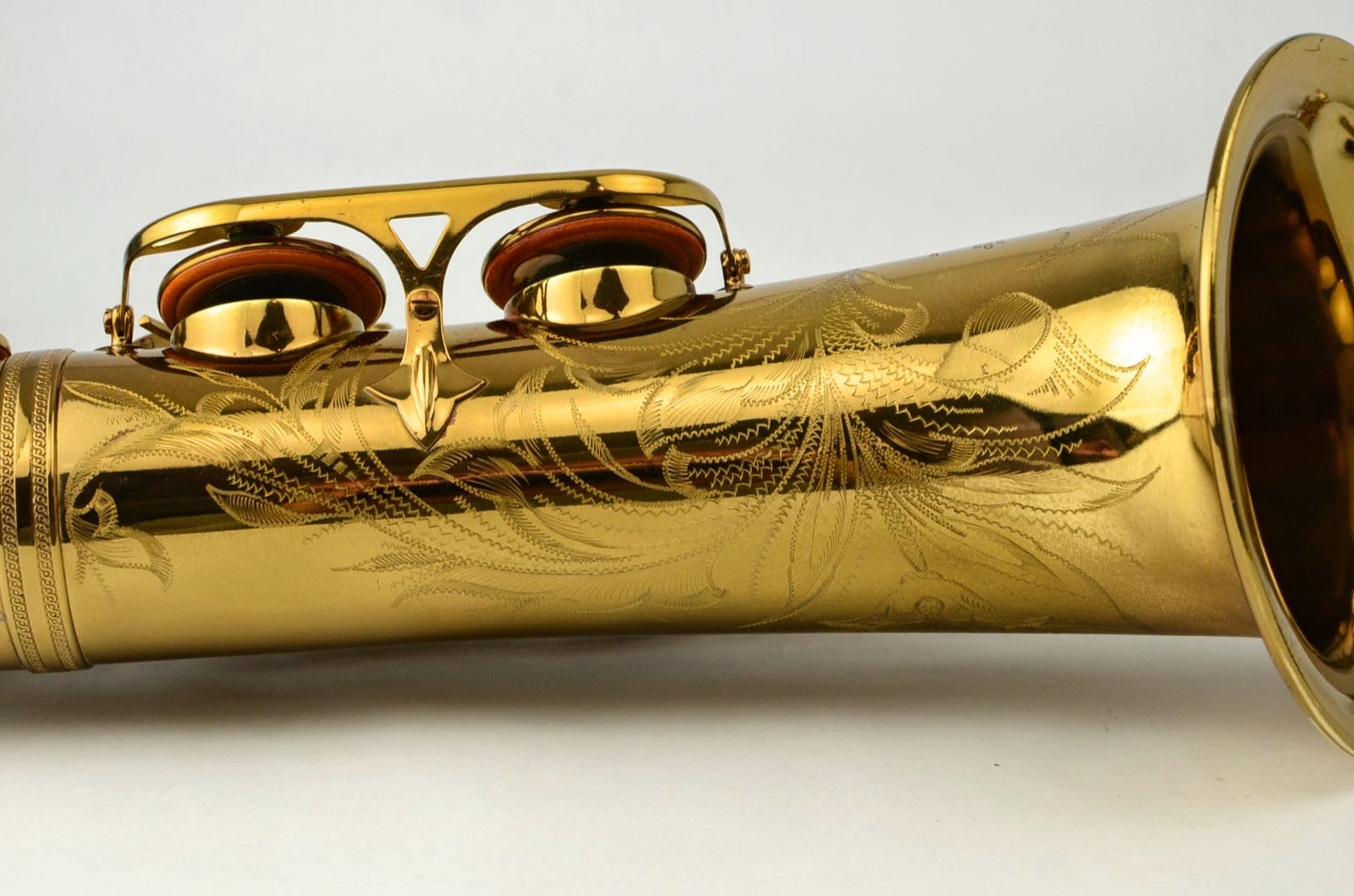
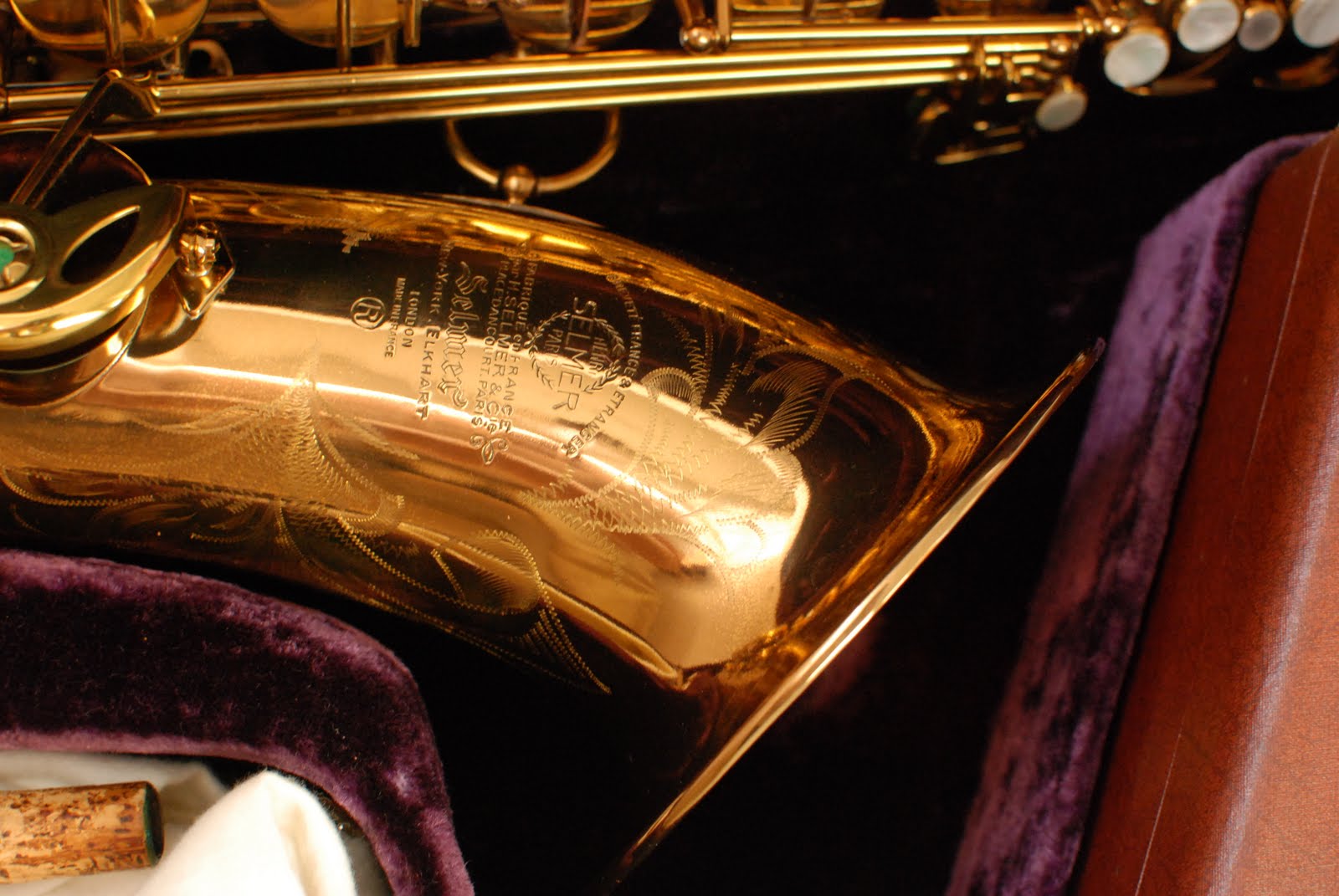
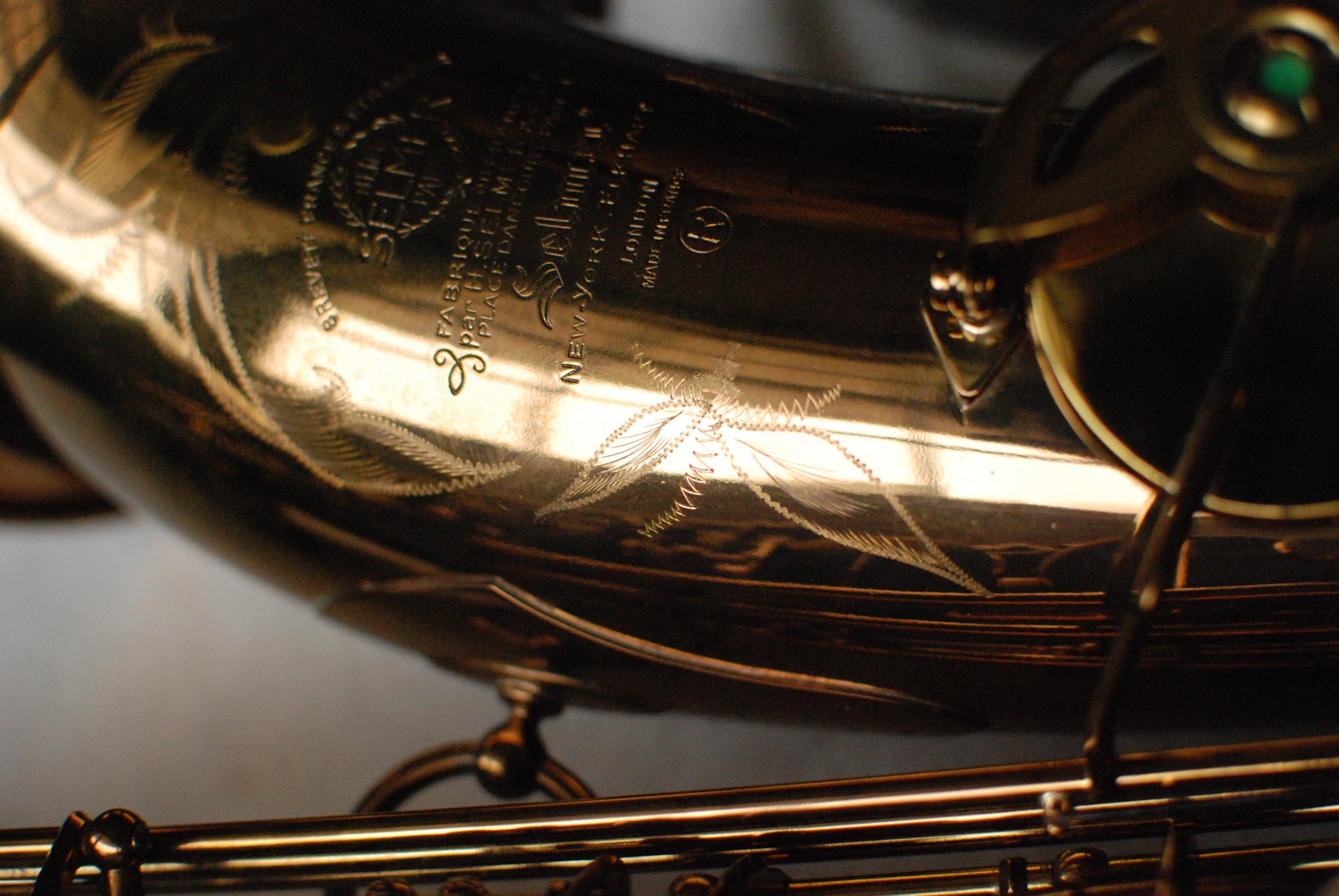
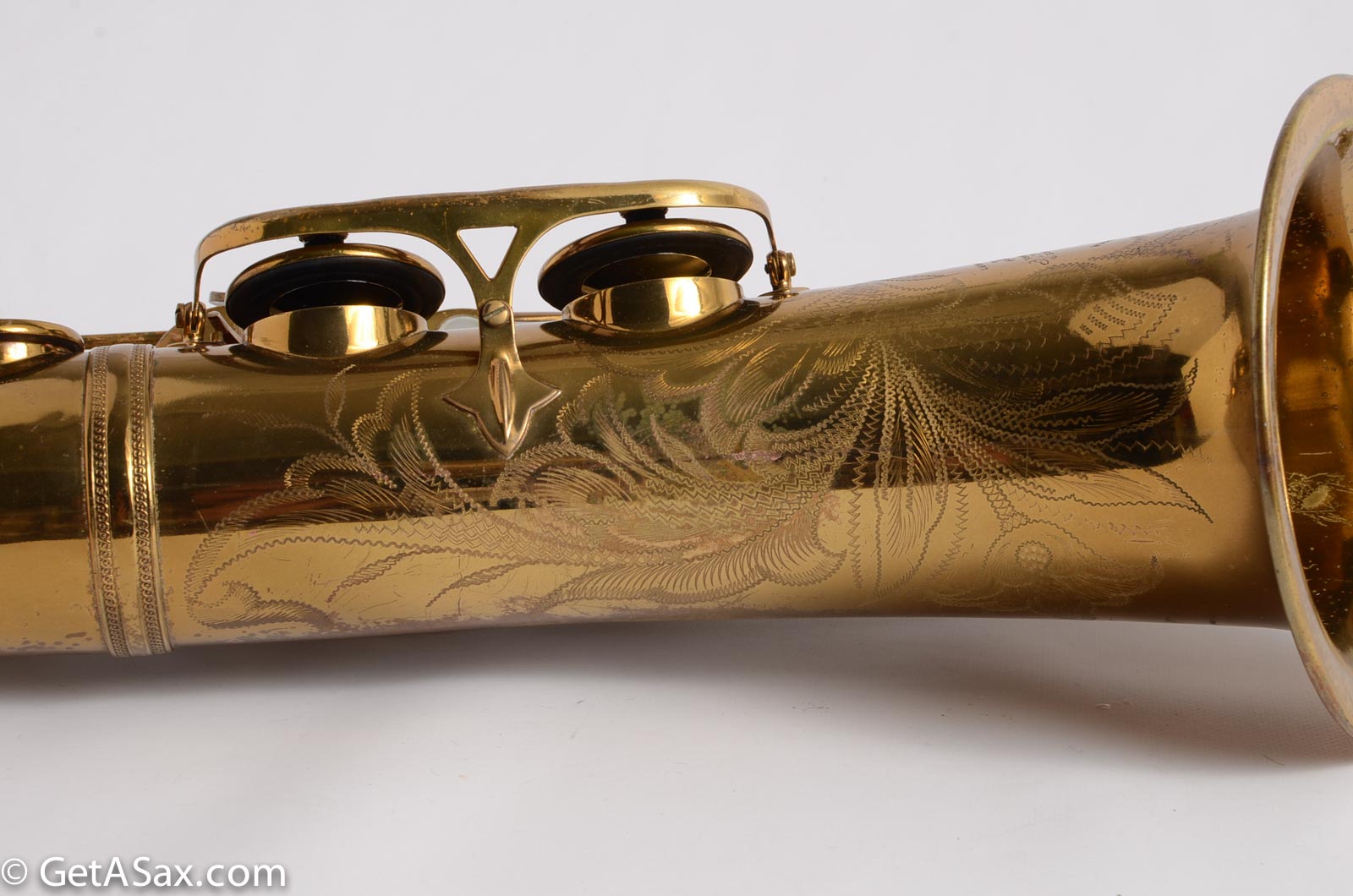
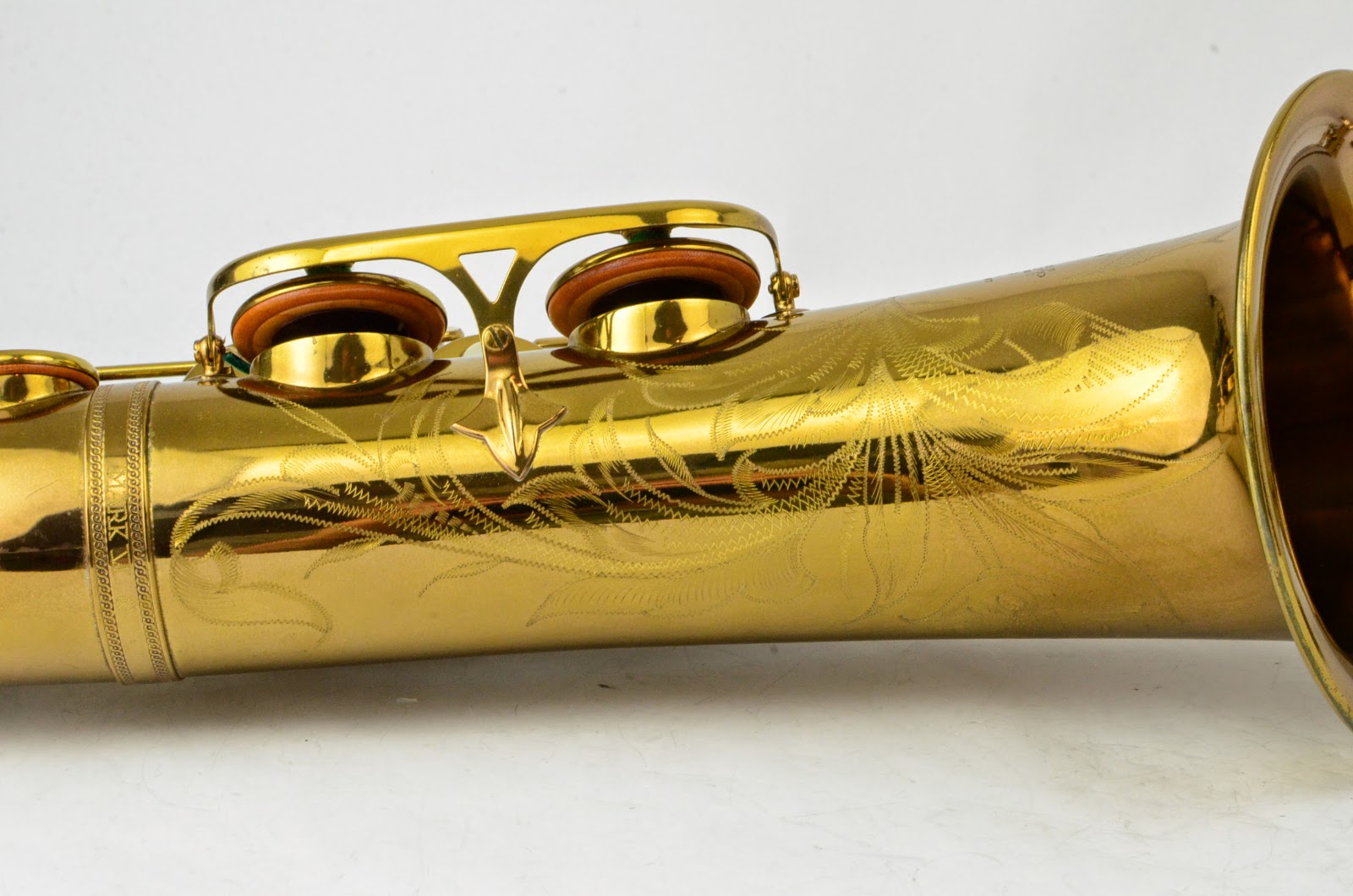
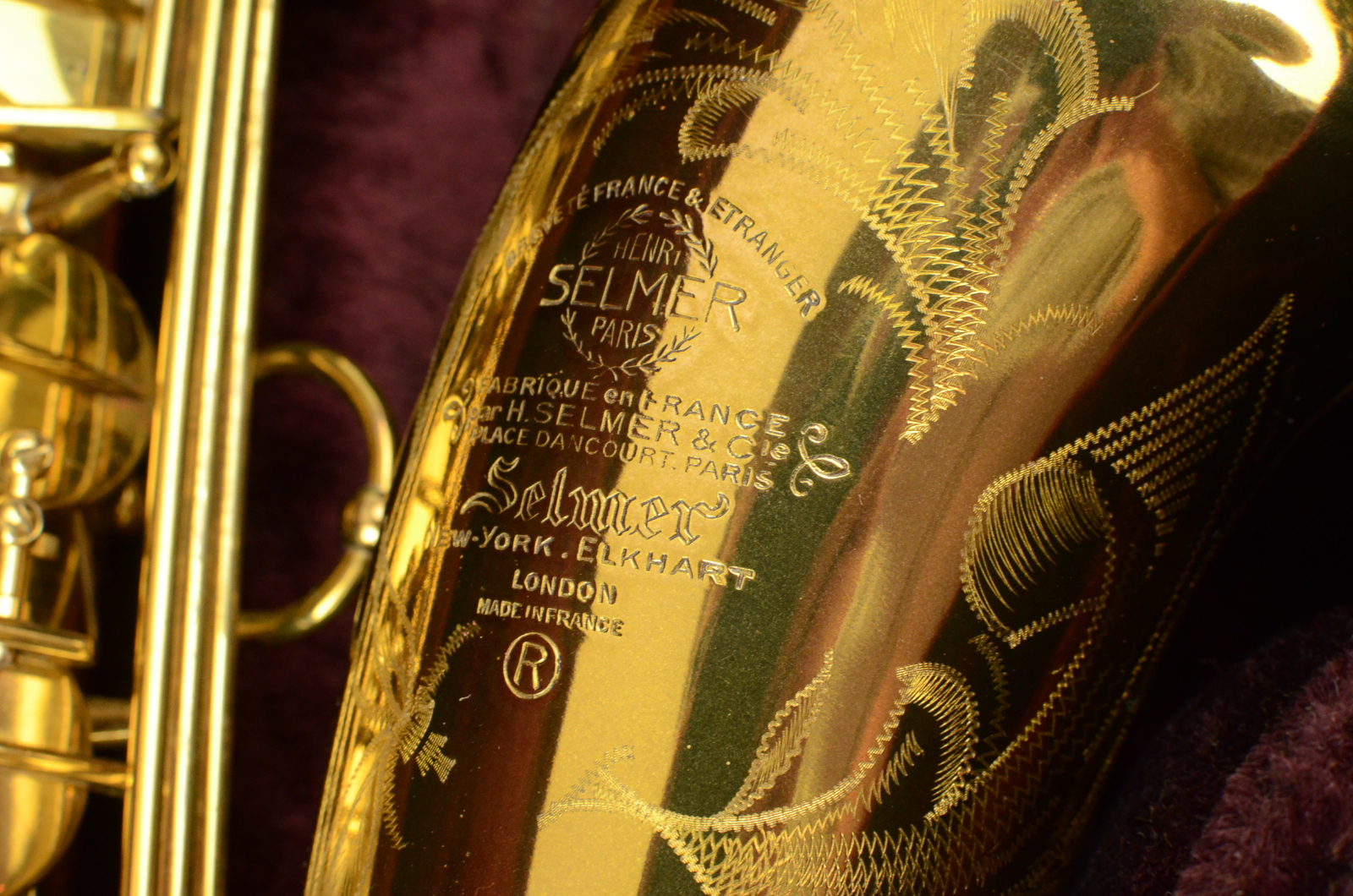
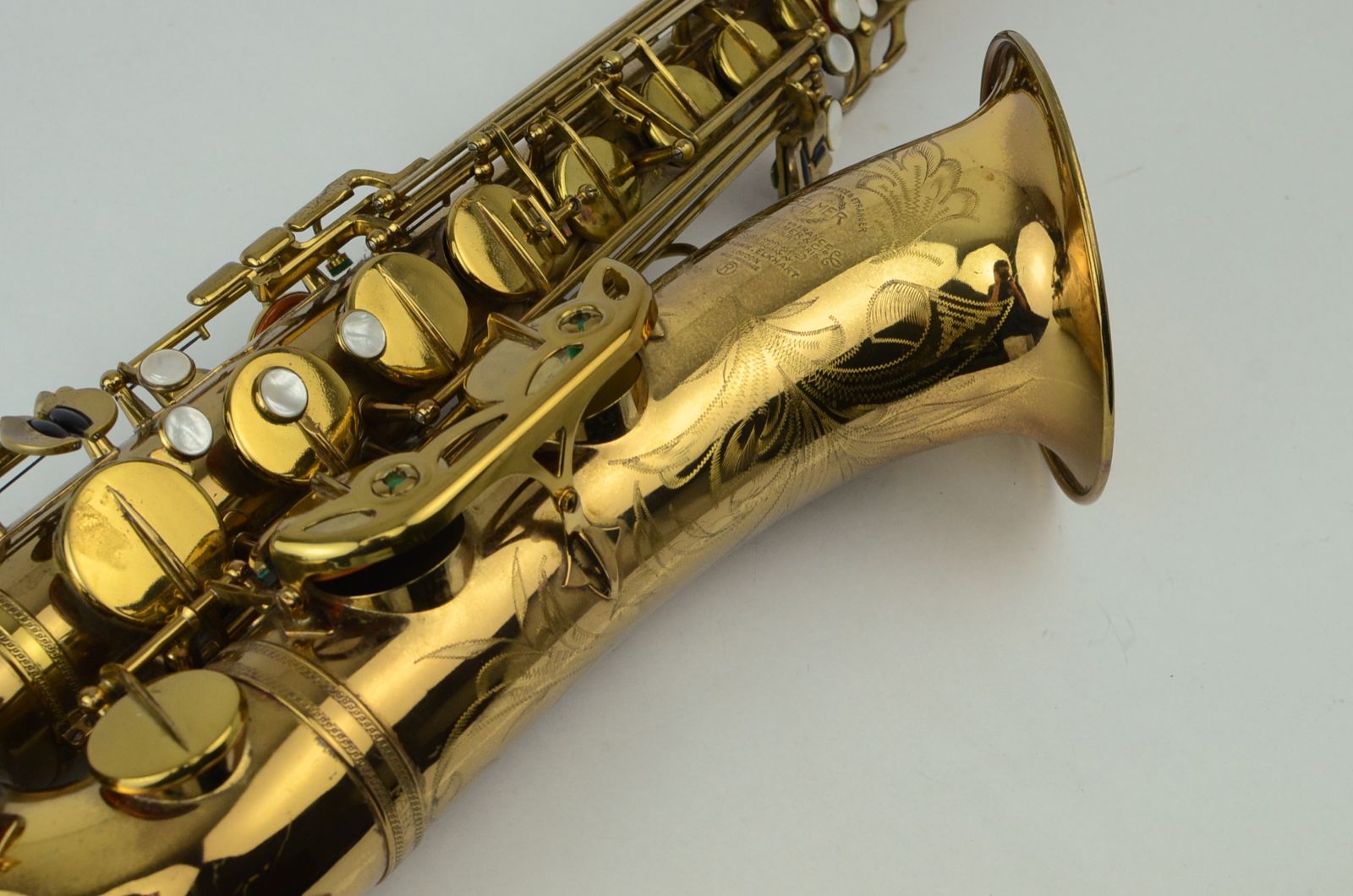


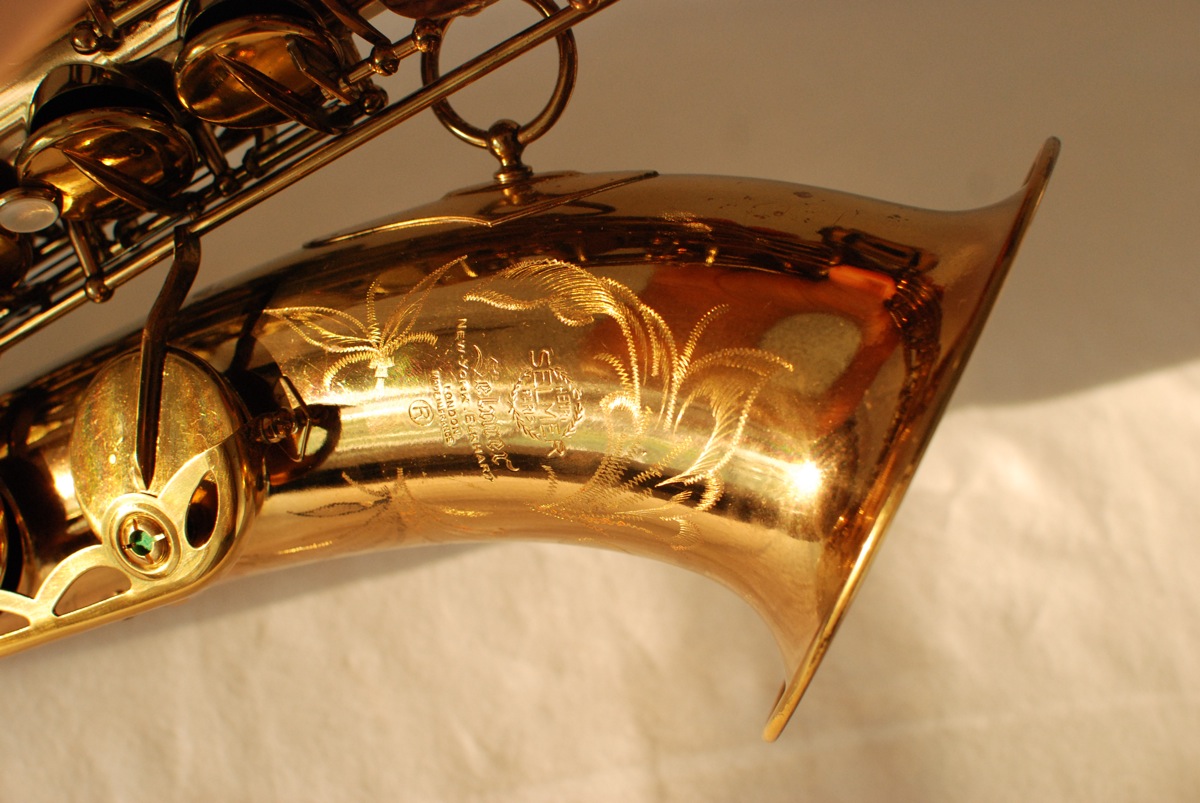
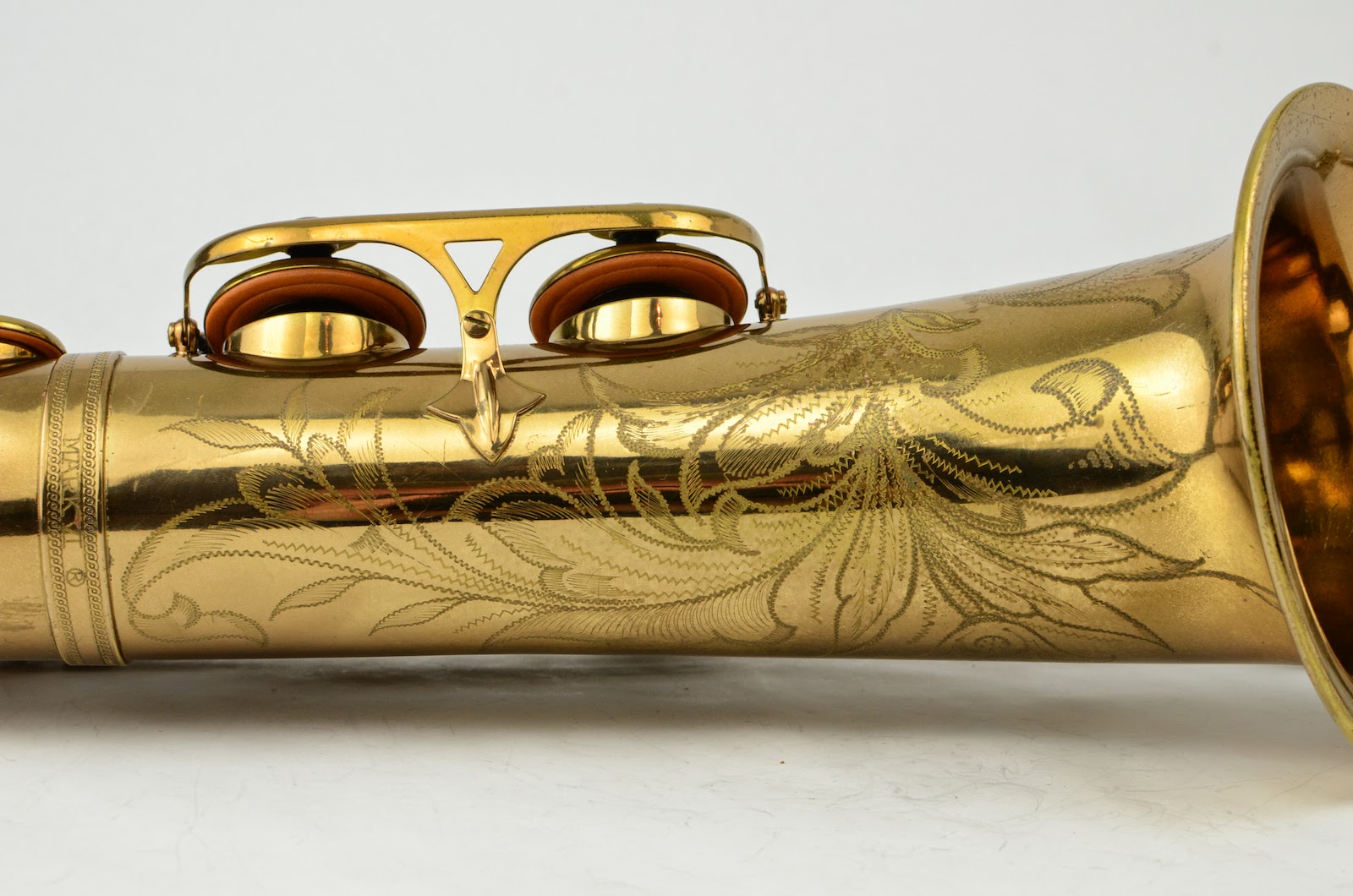
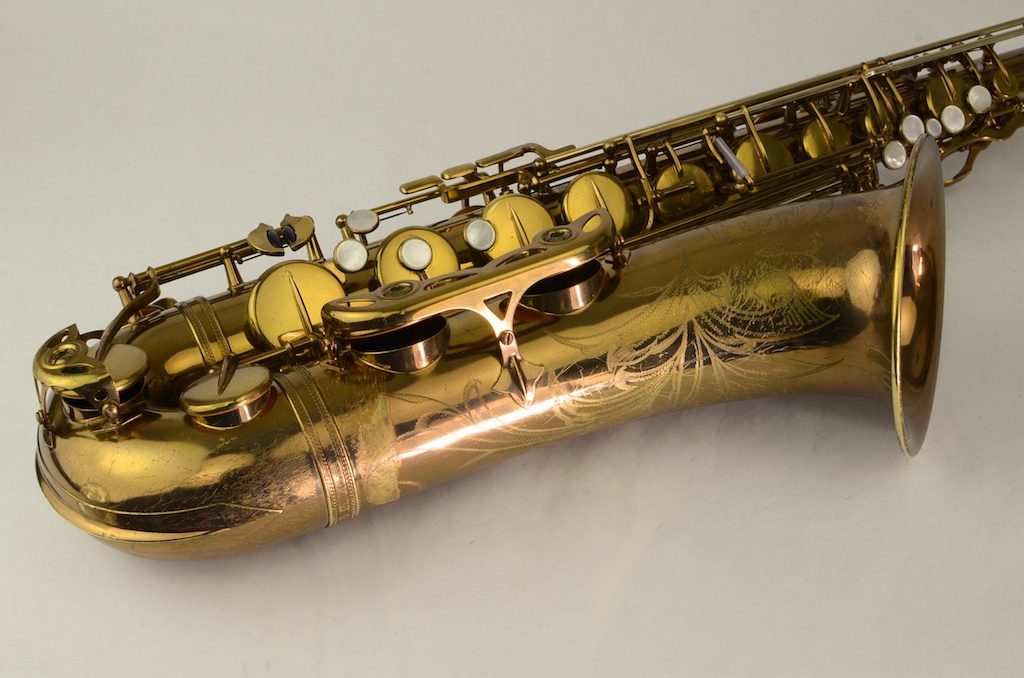
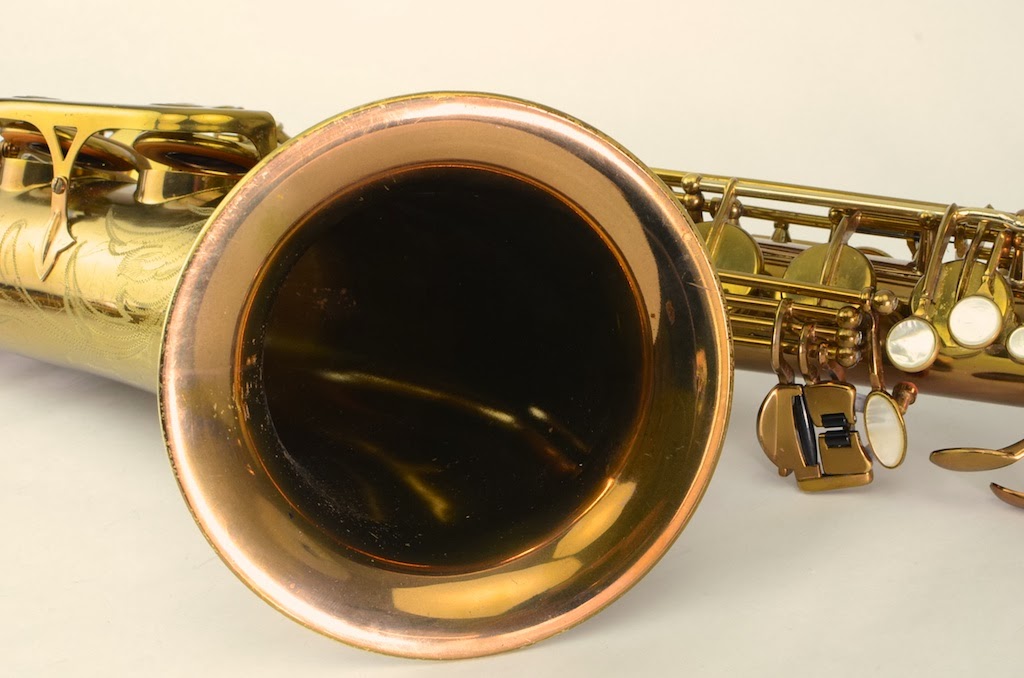
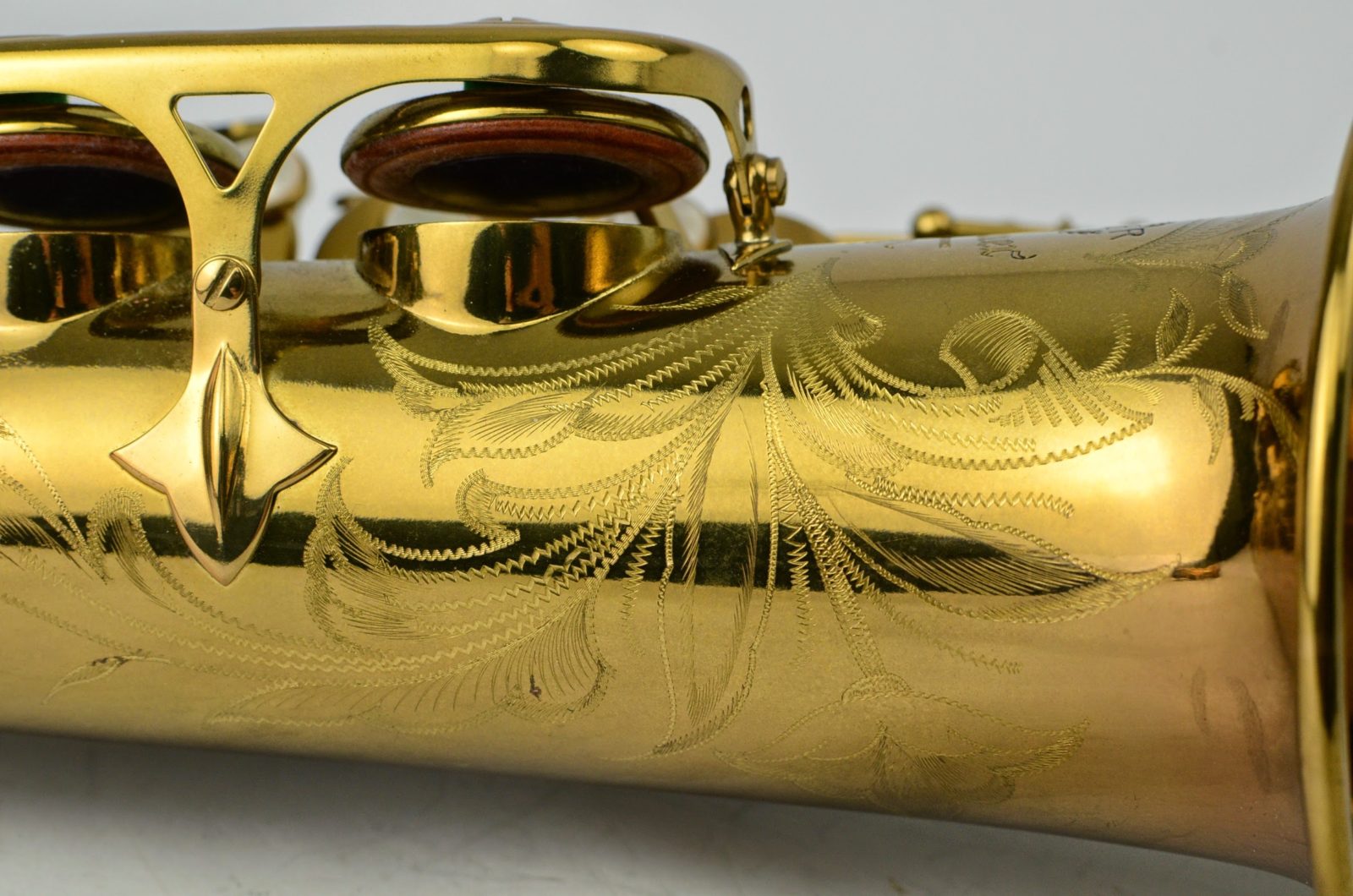
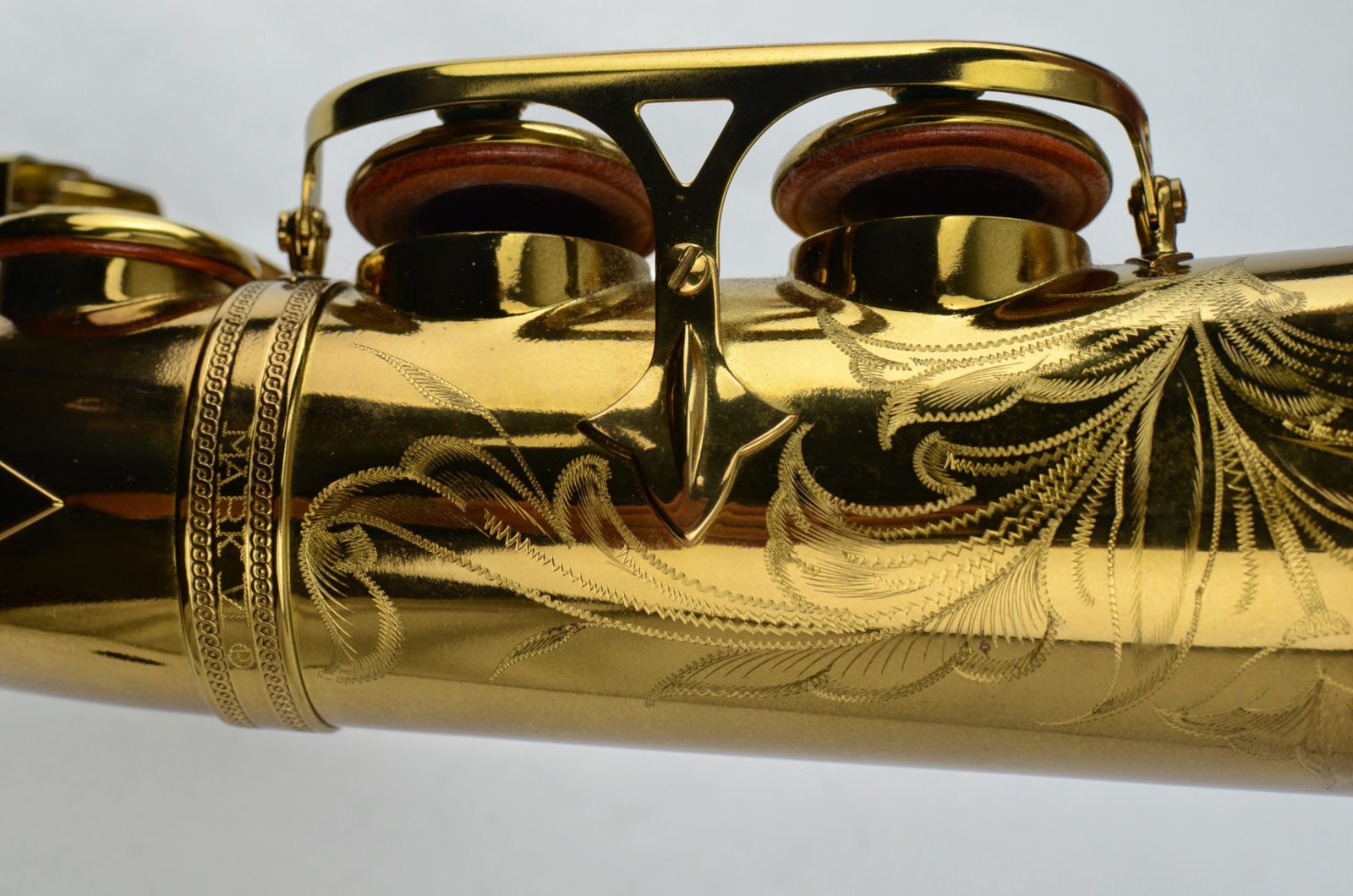
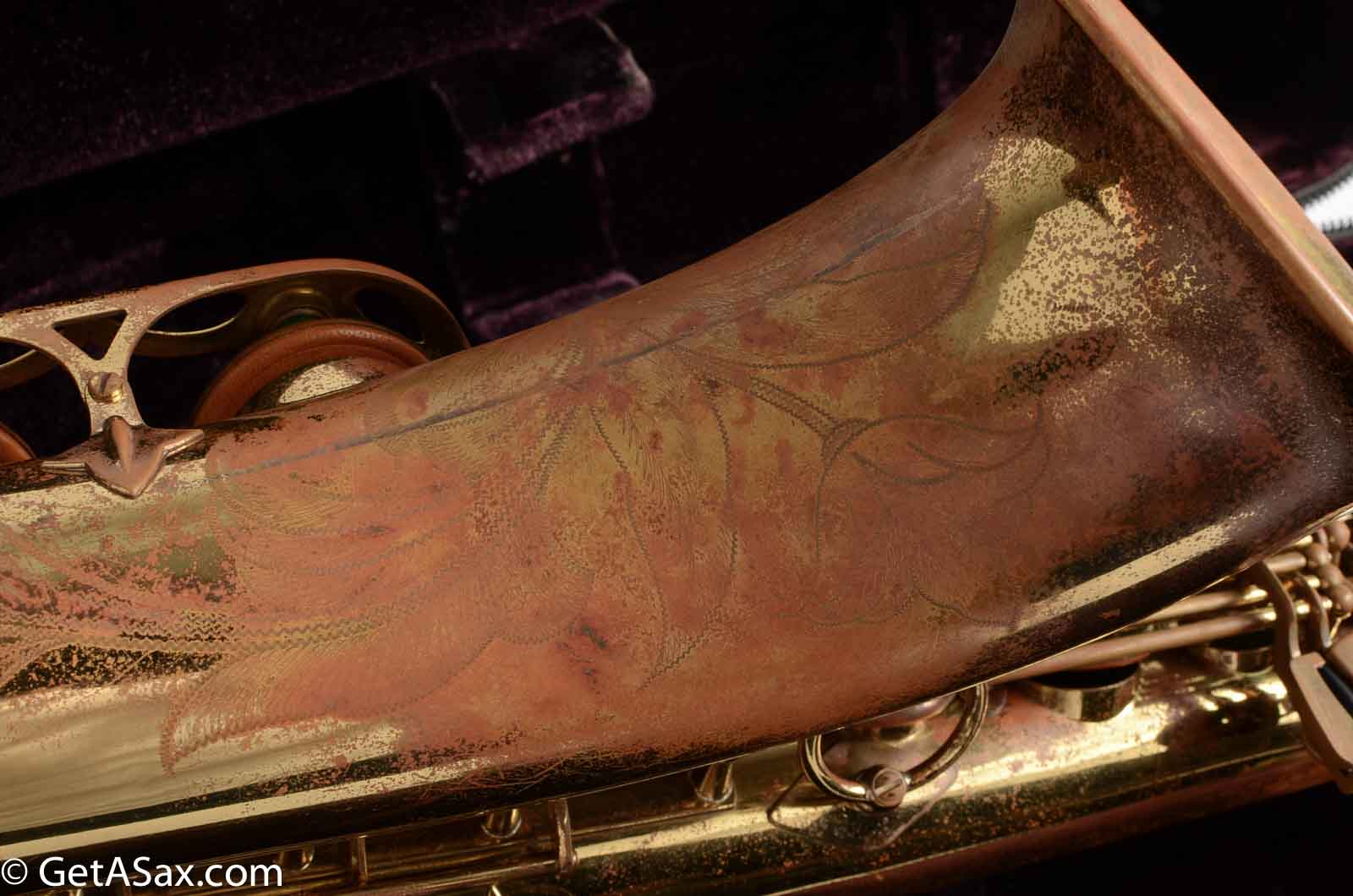
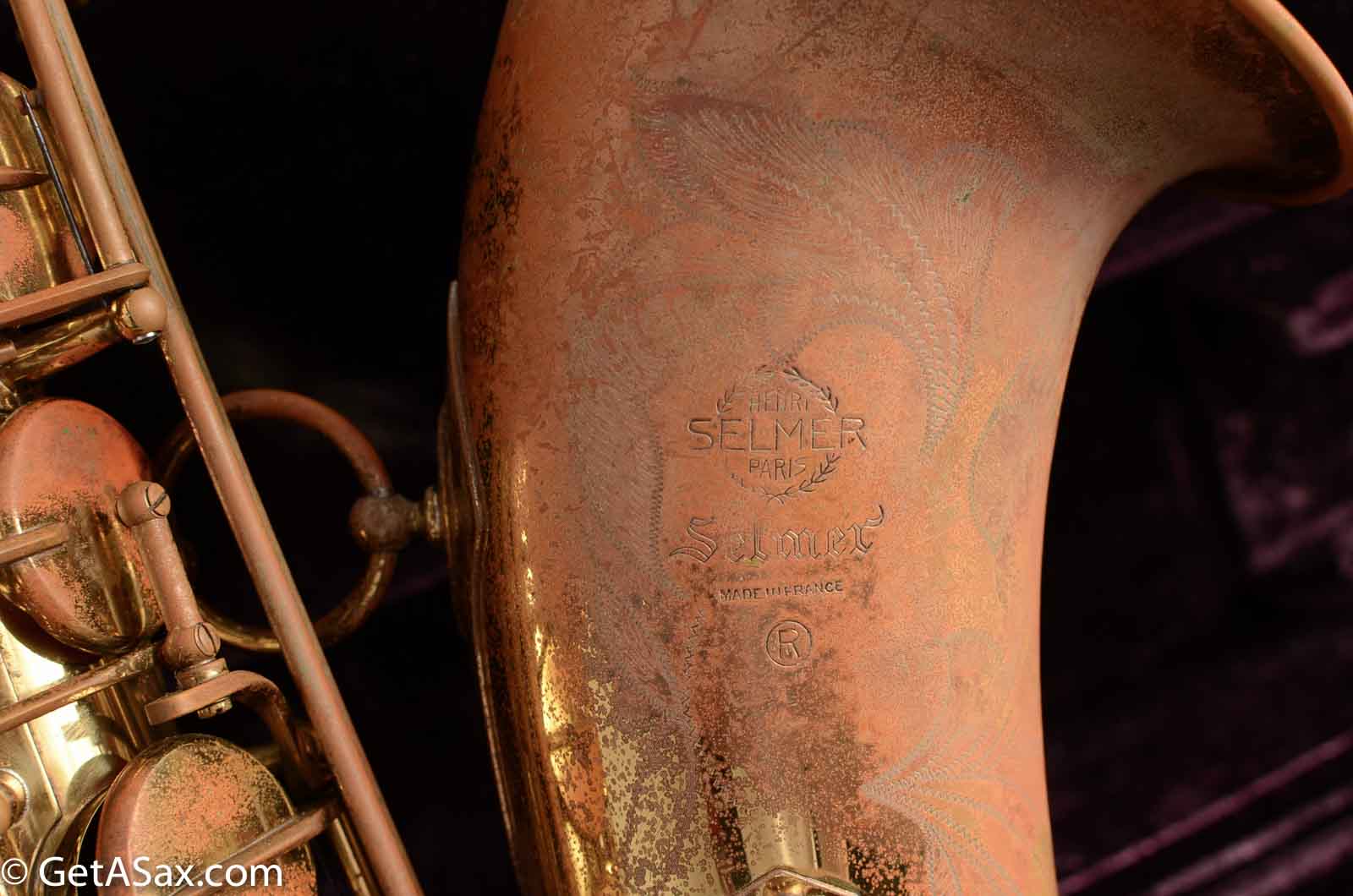

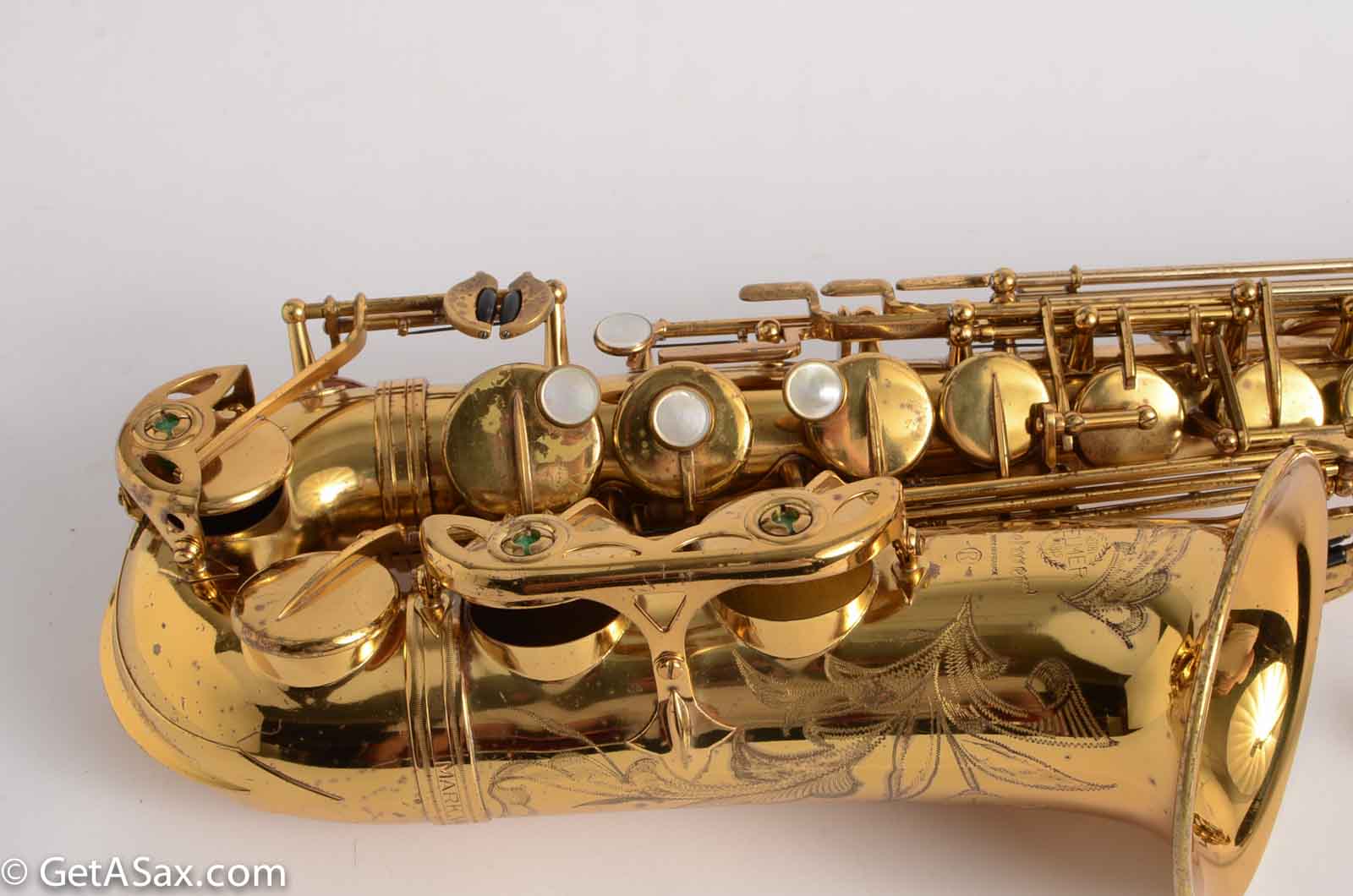
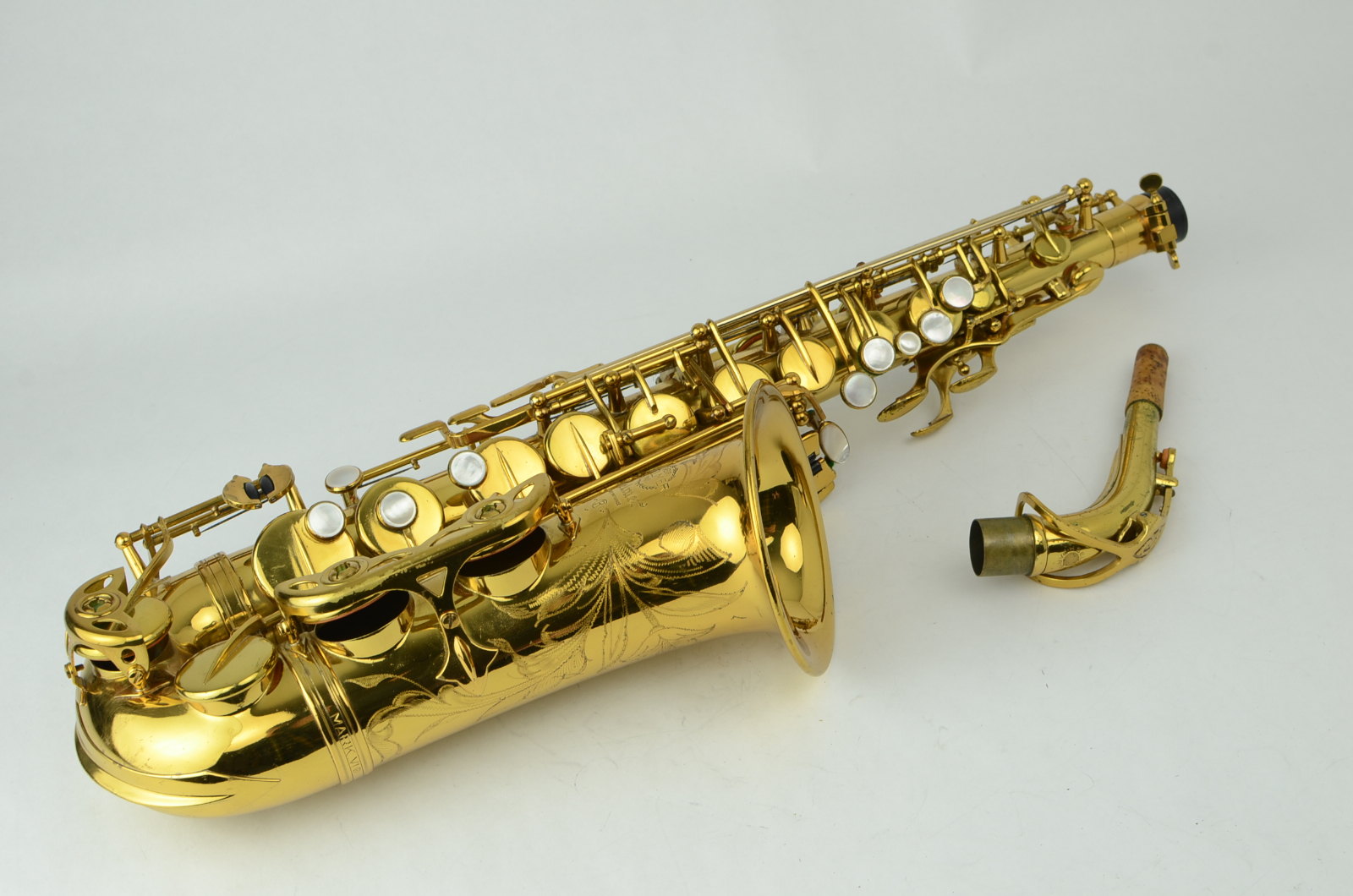

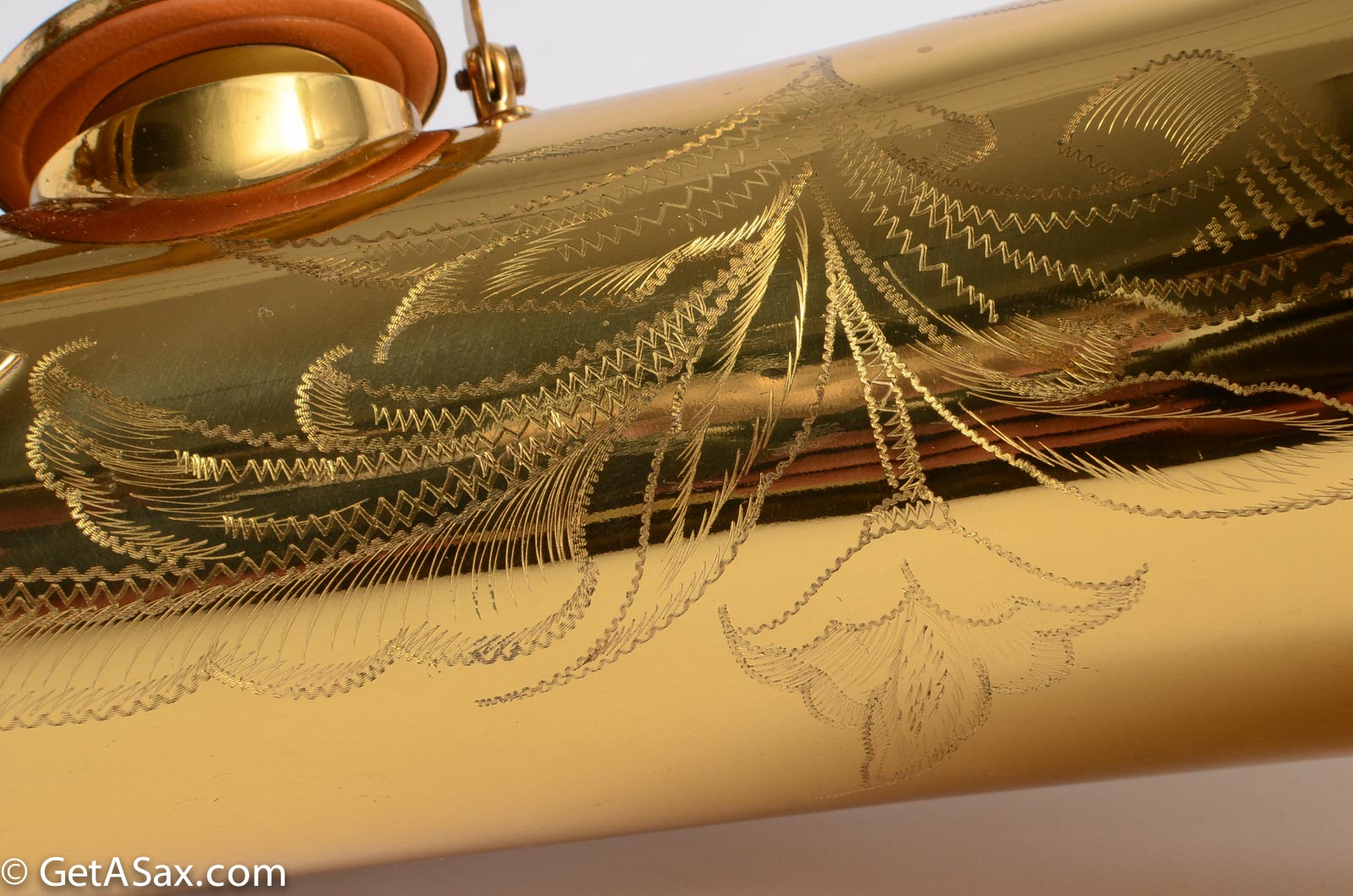
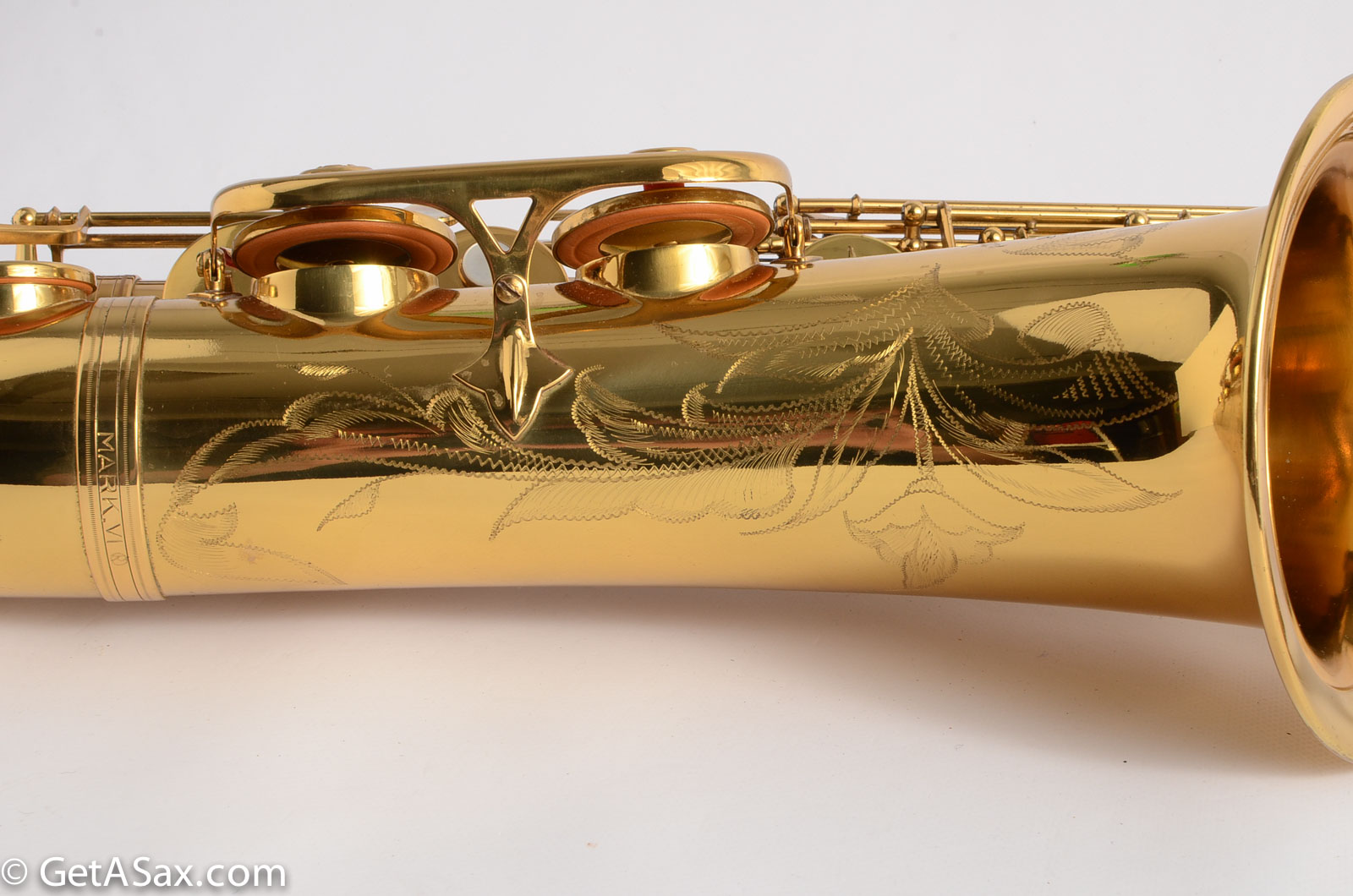
Bravo! Absolutely the best article of it’s type I have ever read. Beautifully done photography of some stunning examples. Looking forward to seeing your follow up posts and re-lacquer photos.
Very informative. Im still not sure if my horn has been relaquered though. If it was, it was done by the factory.
Hi John, If you’d like to email some photos, you can send them to getasax at gmail and I’ll get back to you about what the lacquer looks like to me at least, if you’re curious. Thanks for the comment.
I Just saw this after all these months. I will send you pictures.
Fantastic article. Thank you! This is far-and-away the best guide I’ve encountered so far regarding original lacquer.
I really appreciate what you have done here with this research and would like to say thank you for sharing.
How can I be sure what I purchased is actually a Selmer Mark VI? It has all of the normal markings and a 85xxx serial number. But how do I really know it’s a Mark VI?
Thanks for the question! I need to do an article on this, as I get asked it a lot. Most Selmers don’t have the model name on them, including a lot of early Mark VI’s. You have to go by serial number and features with the Euro Assembled ones up into the 60’s and with some of the other ones.
Is the same true about the red and the engraving on a Yamaha?
Probably so.
Hi Really informative article Thank you! I have a MKVI tenor which dates to 61 I do not have any serial number on the crook or under the octave , nor do I have mk vi stamped on the band ( below Eb) Is this really a mk vi ? It plays beautiful & wouldn’t swap or sell it even if it isn’t
There was nothing that said Mark VI on any Euro assembled Mark VI’s from the begining up through when they started stamping it on the front of the bow to bell ring, but it was engraved by the octave key and on the bell/bow ring on the American-assembled Mark VI’s of that period. So assuming yours looks like a VI in every other way, then it looks how one would expect it to.